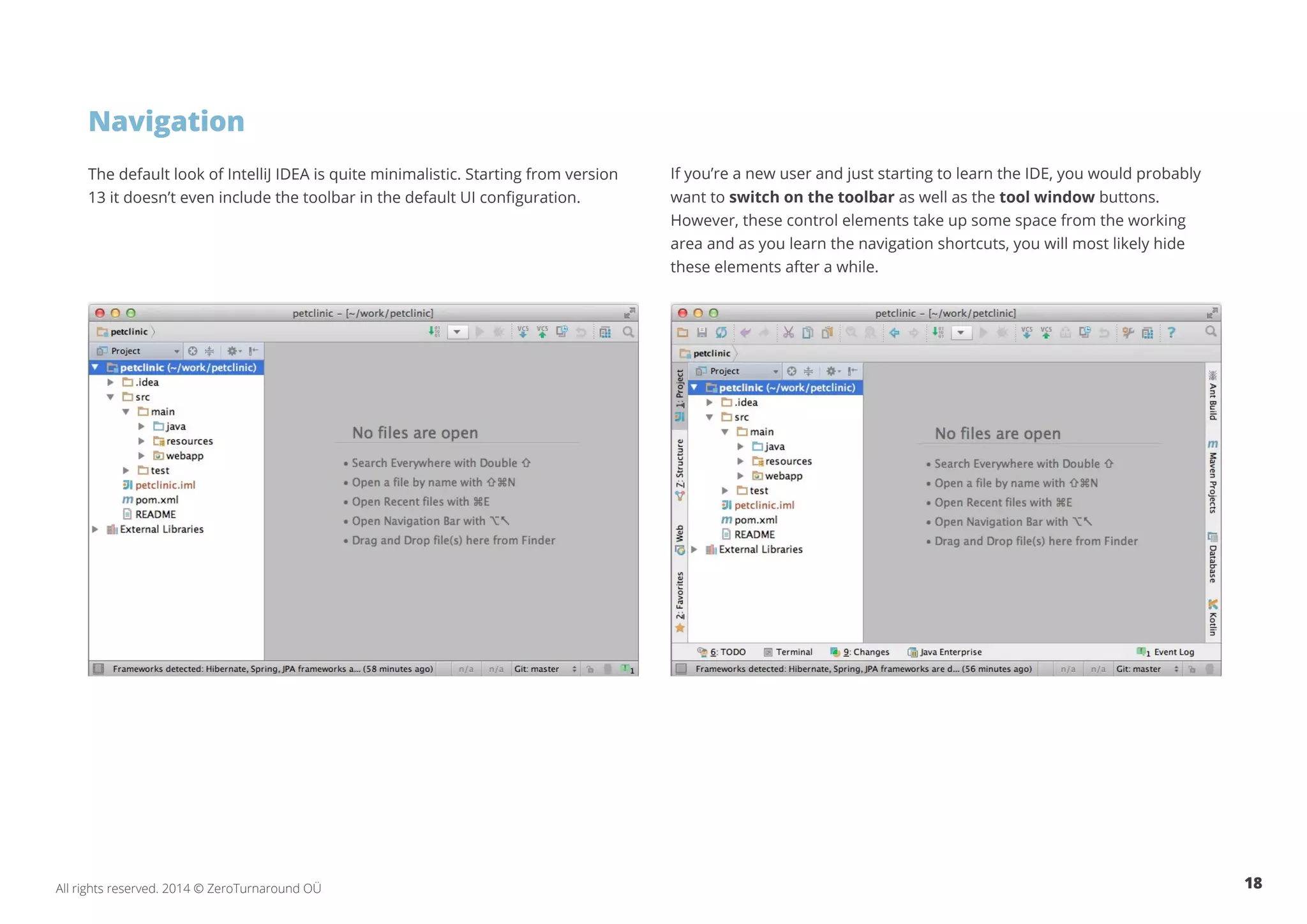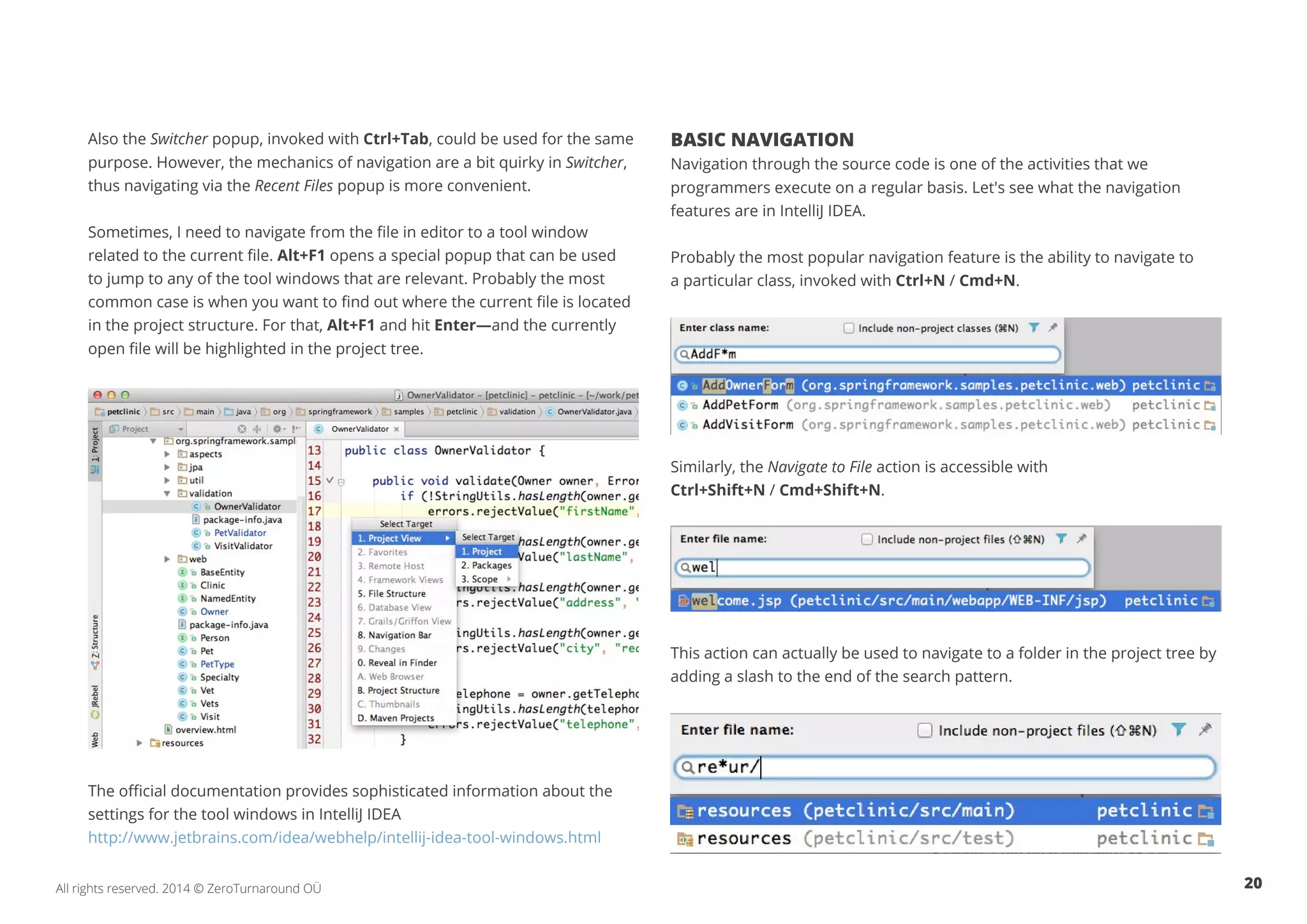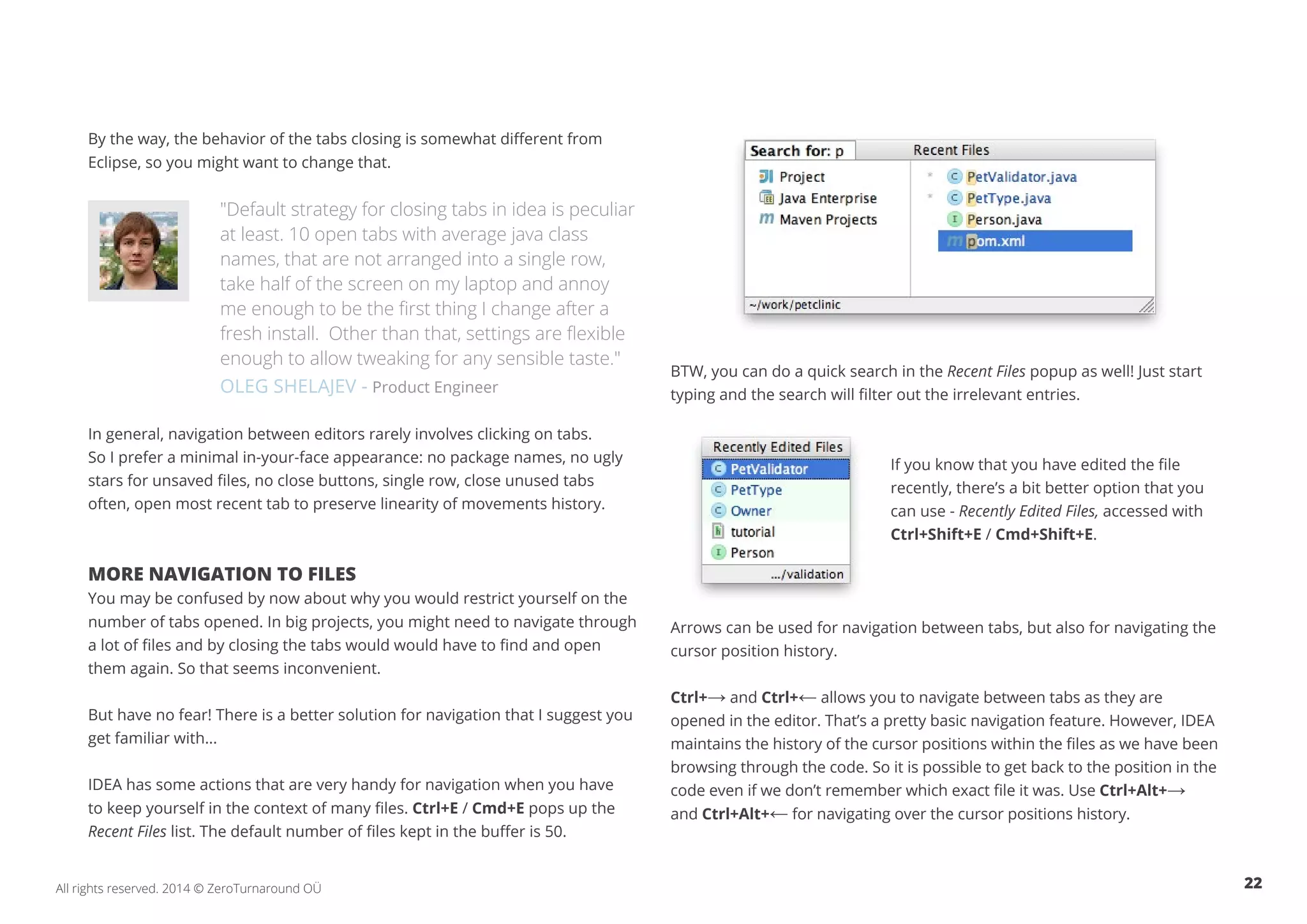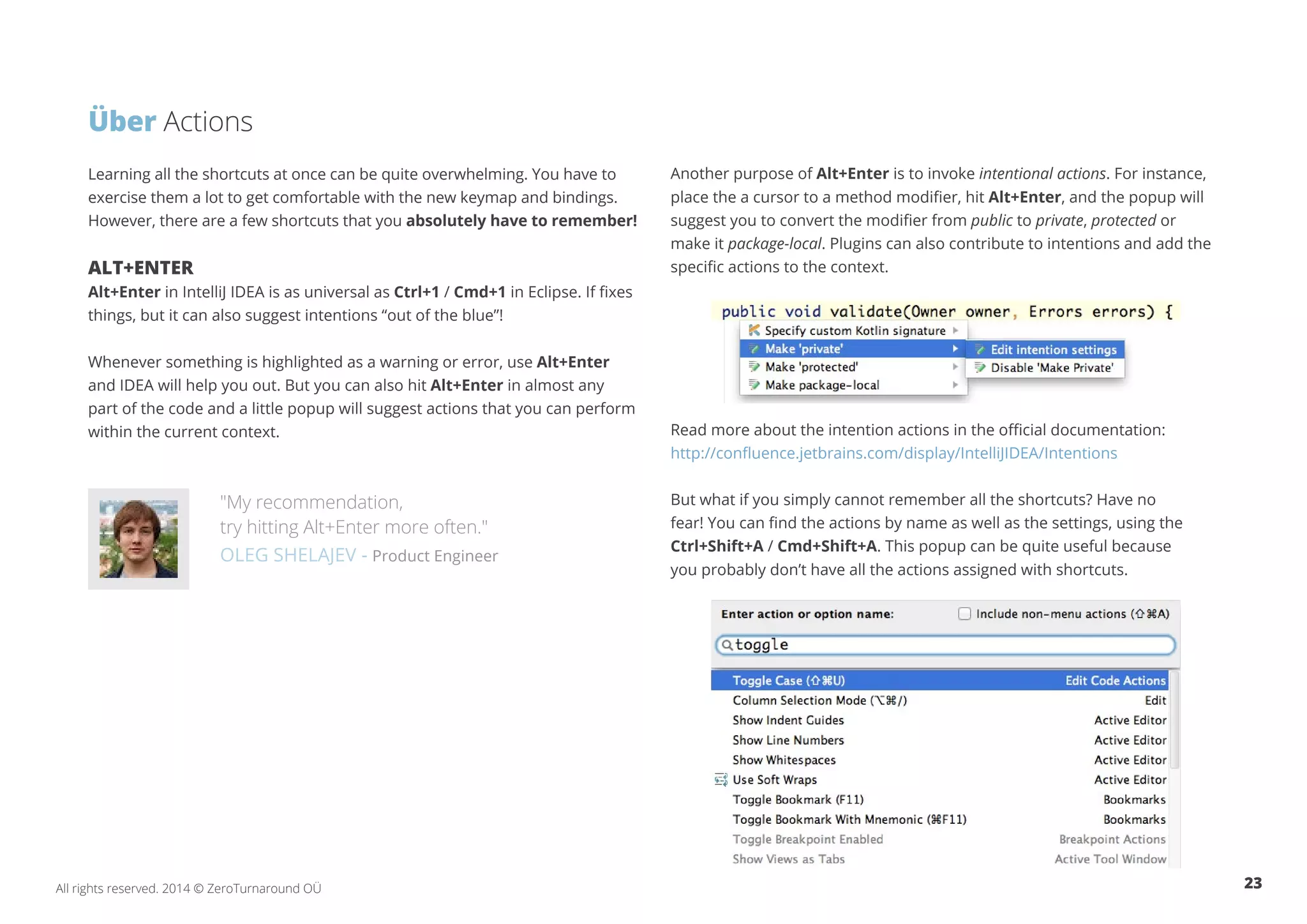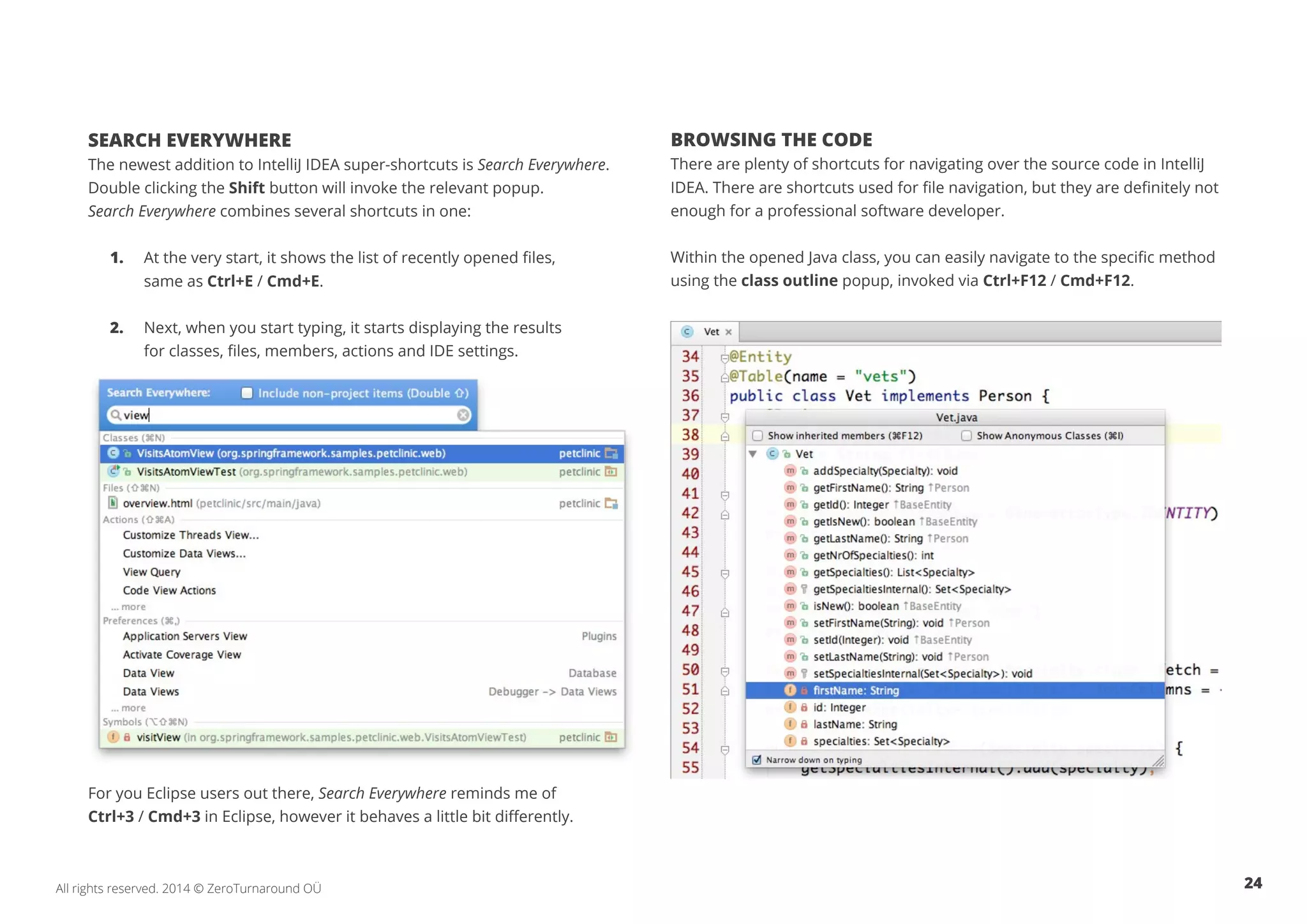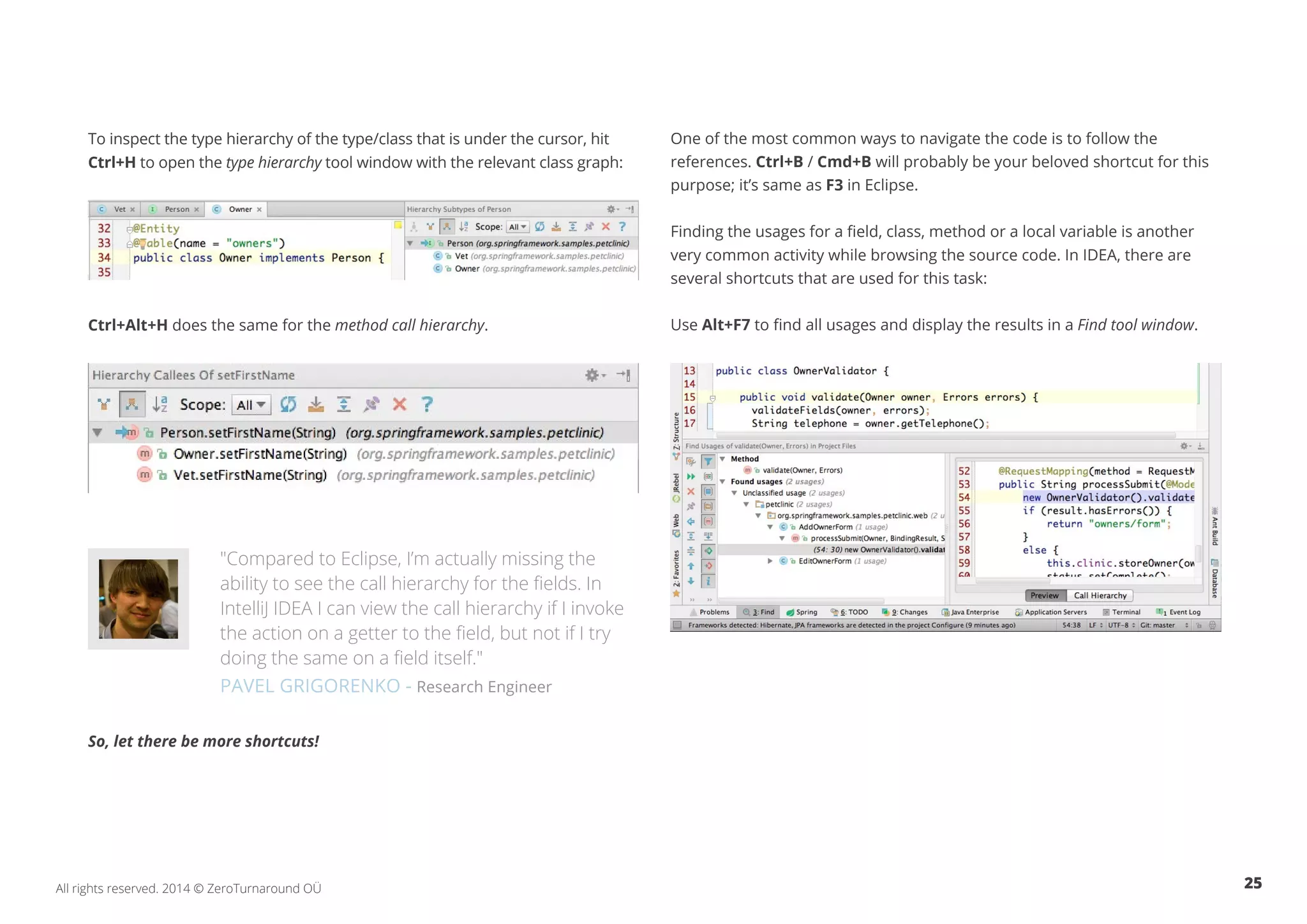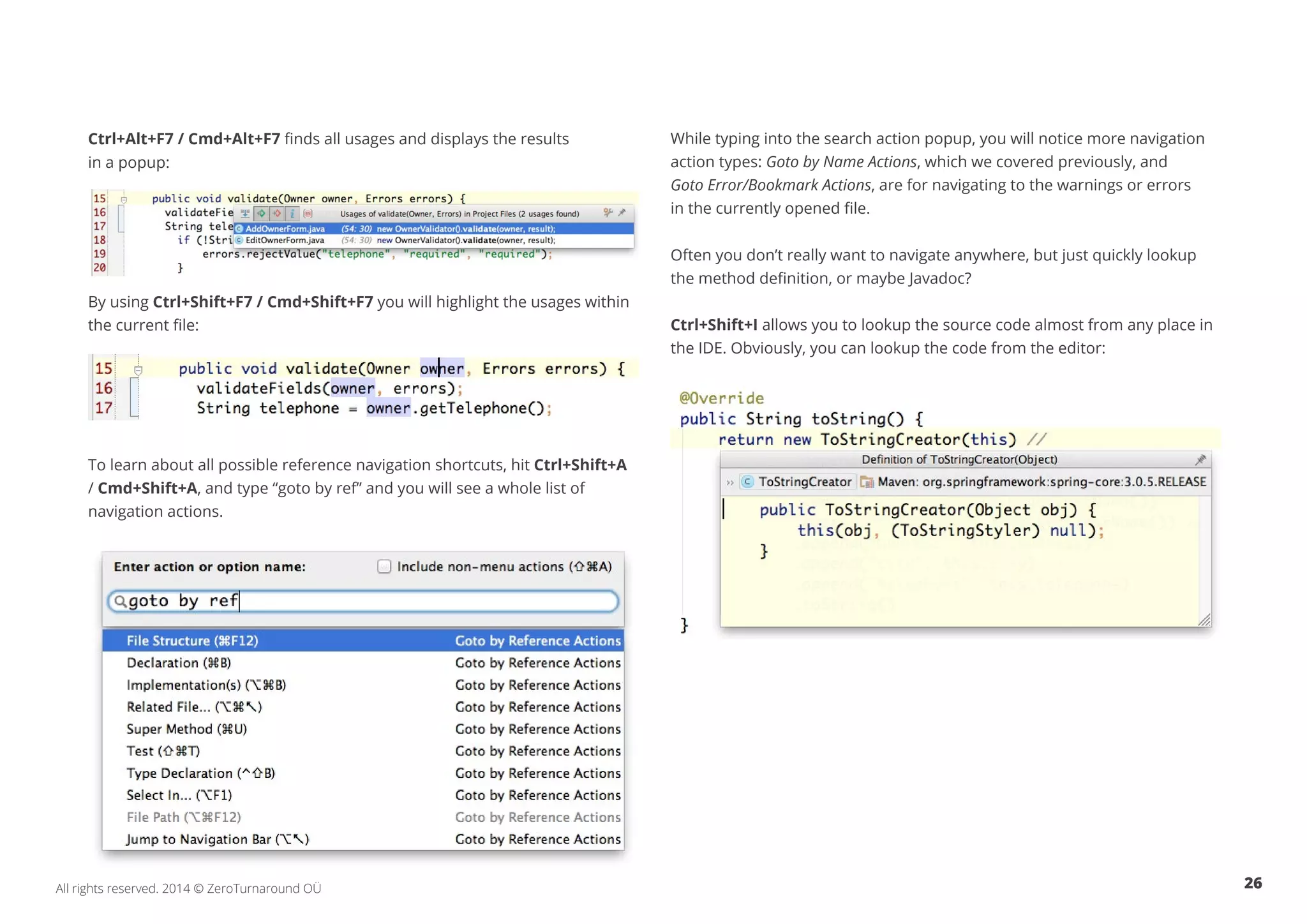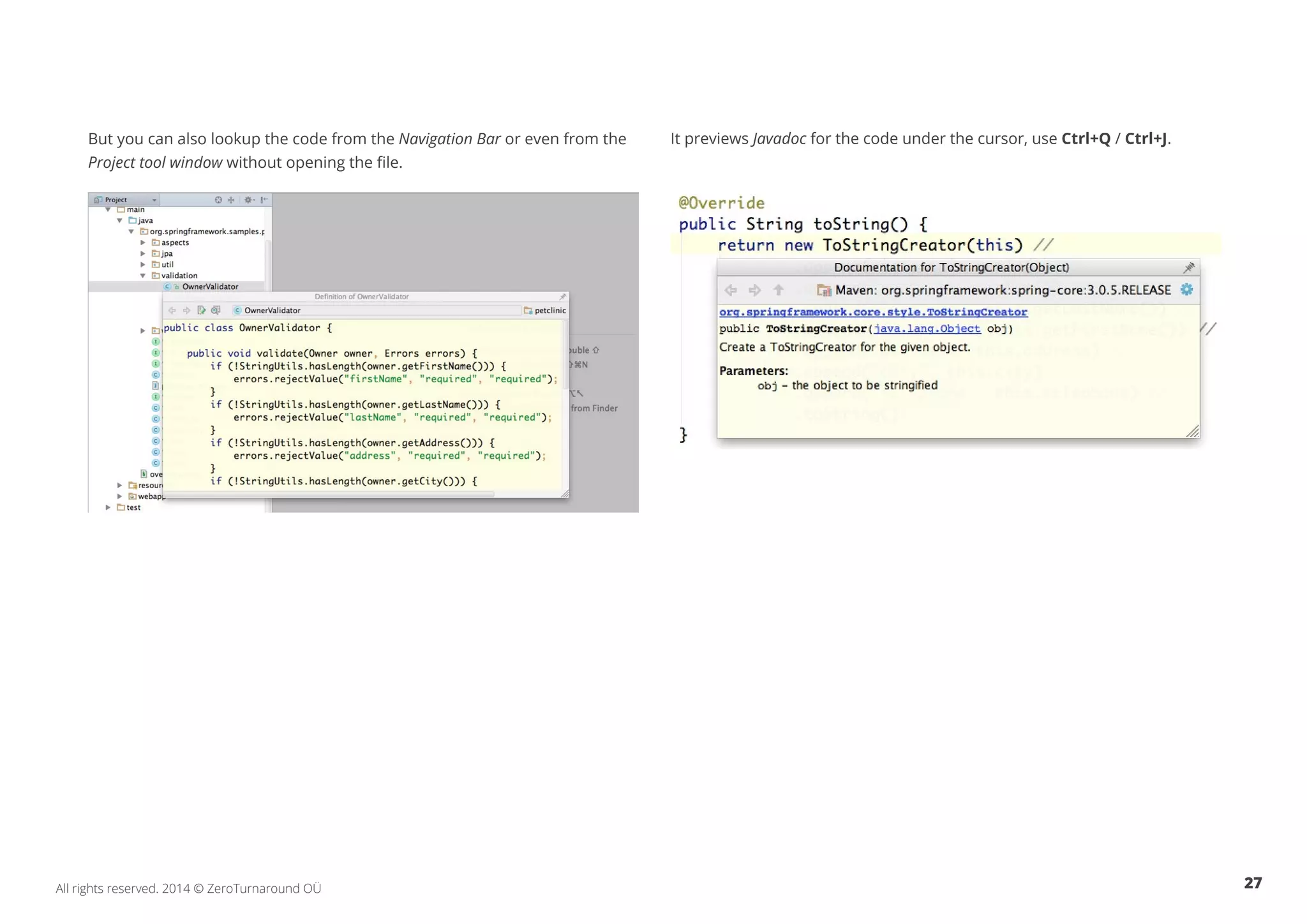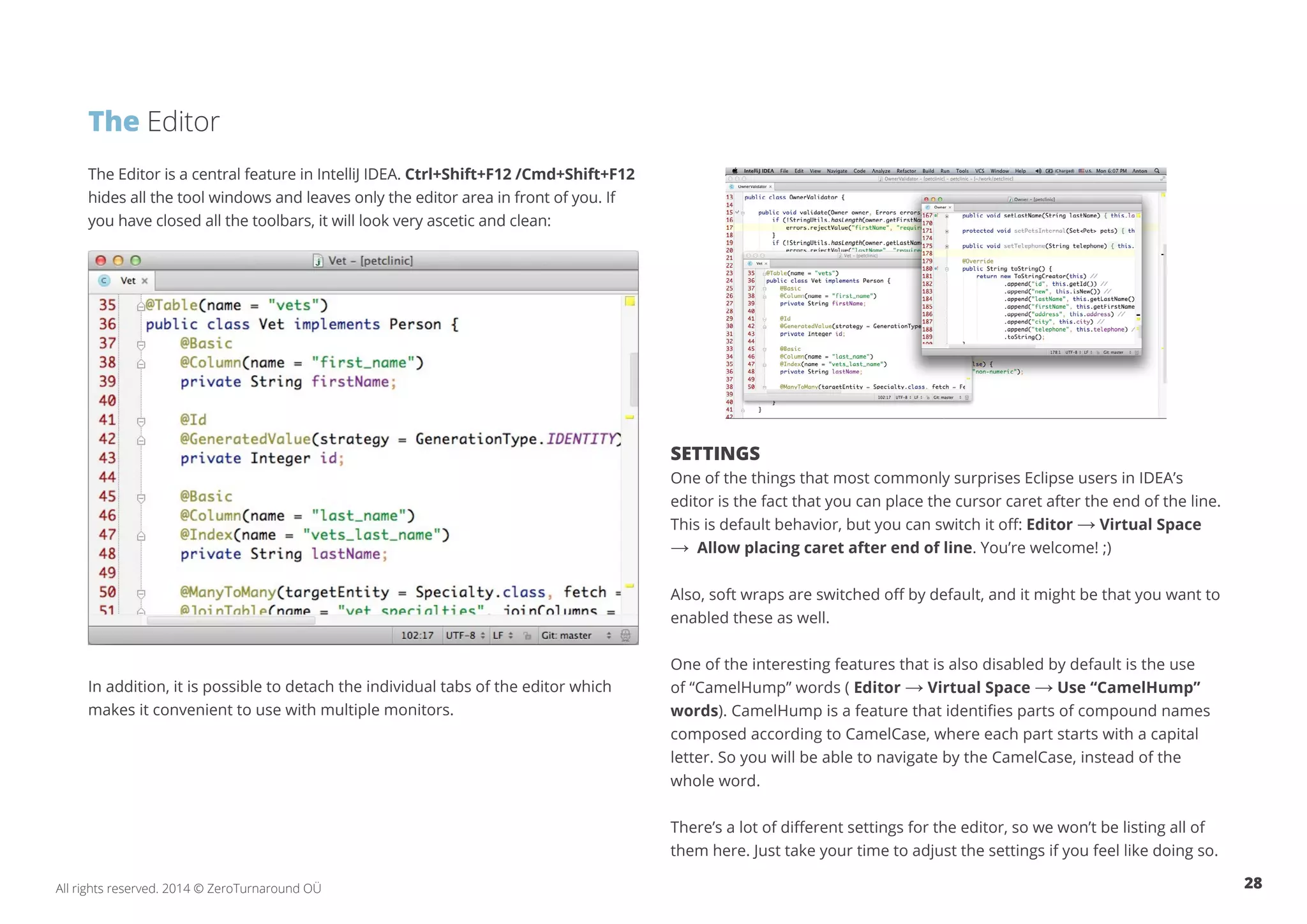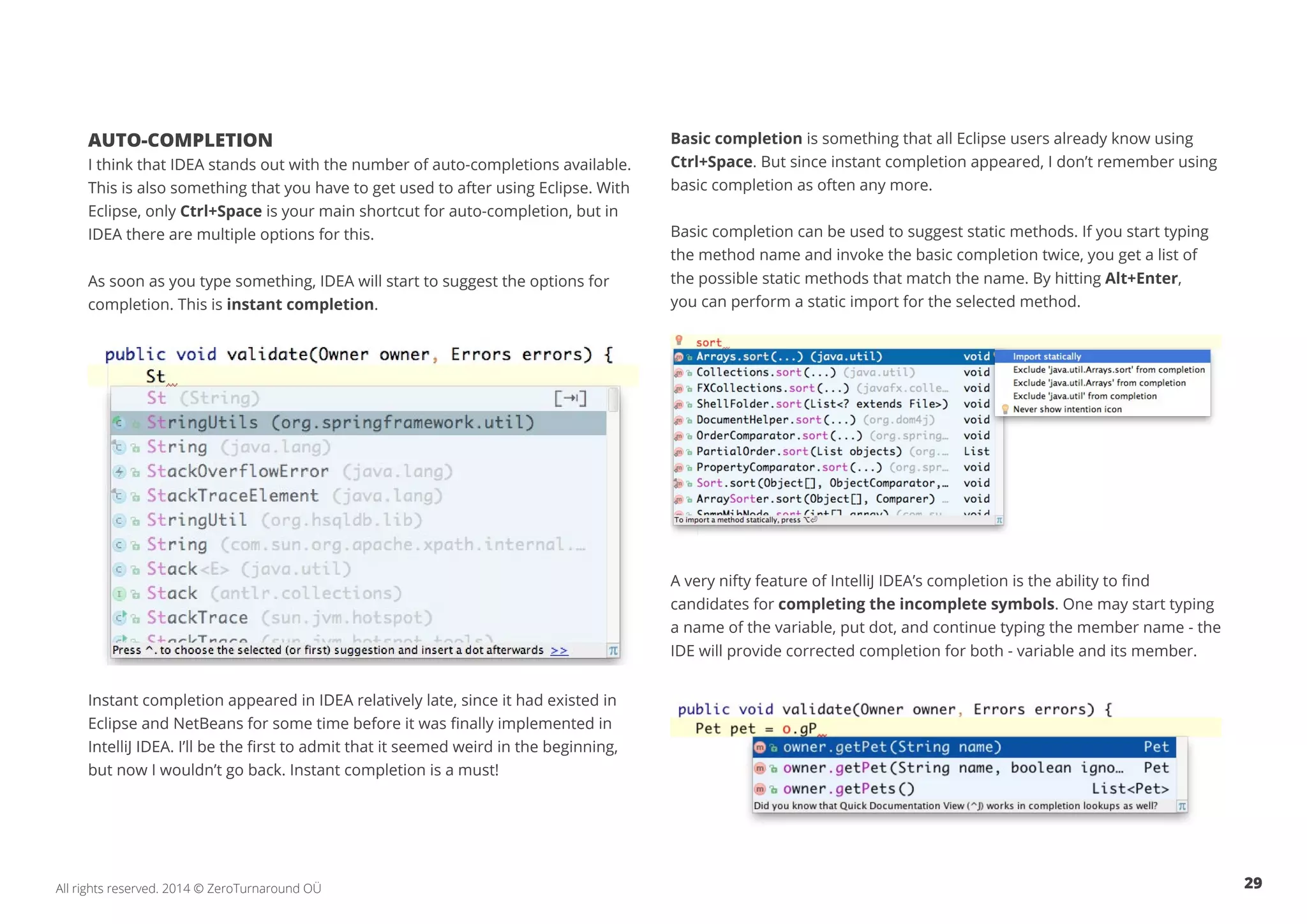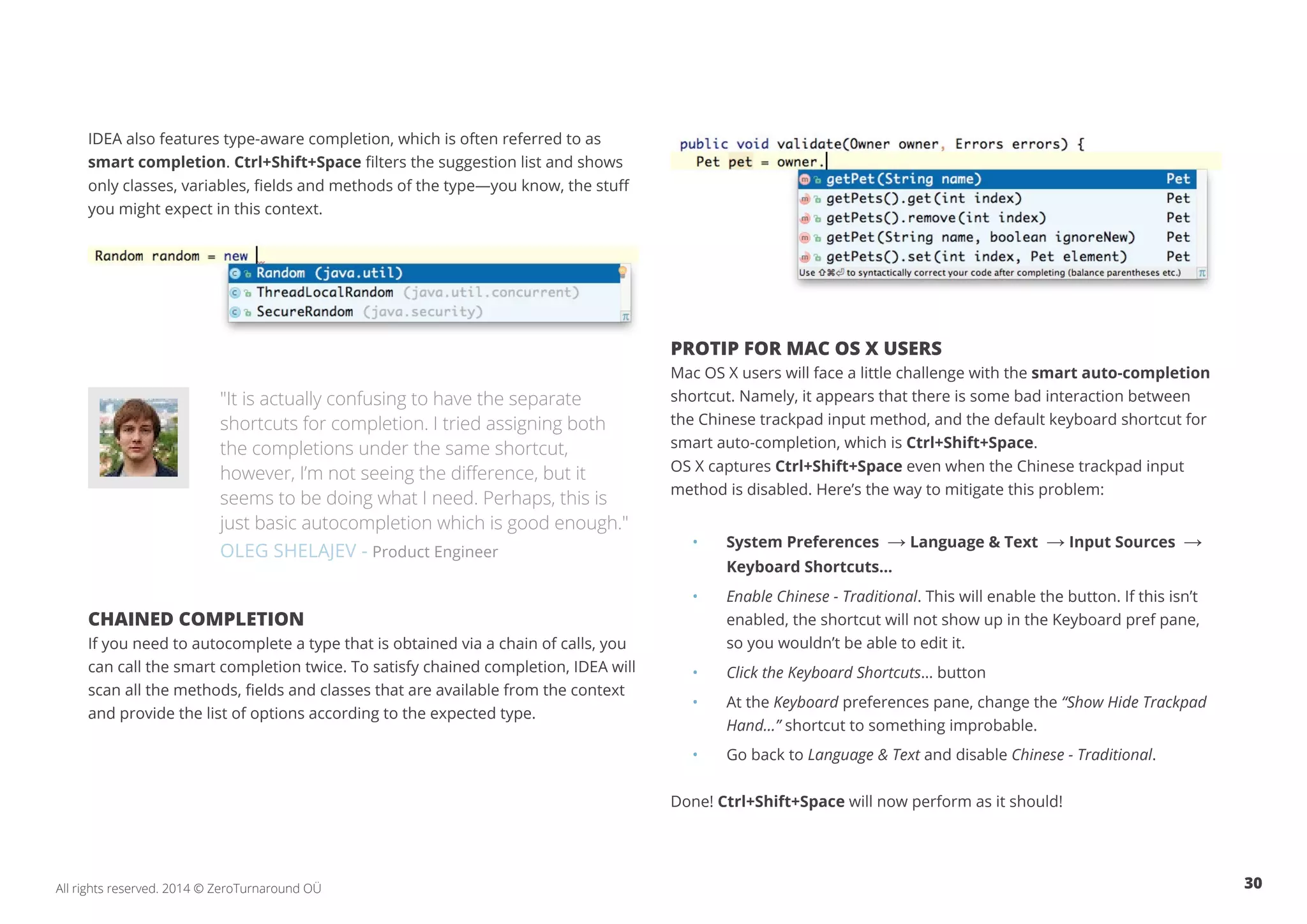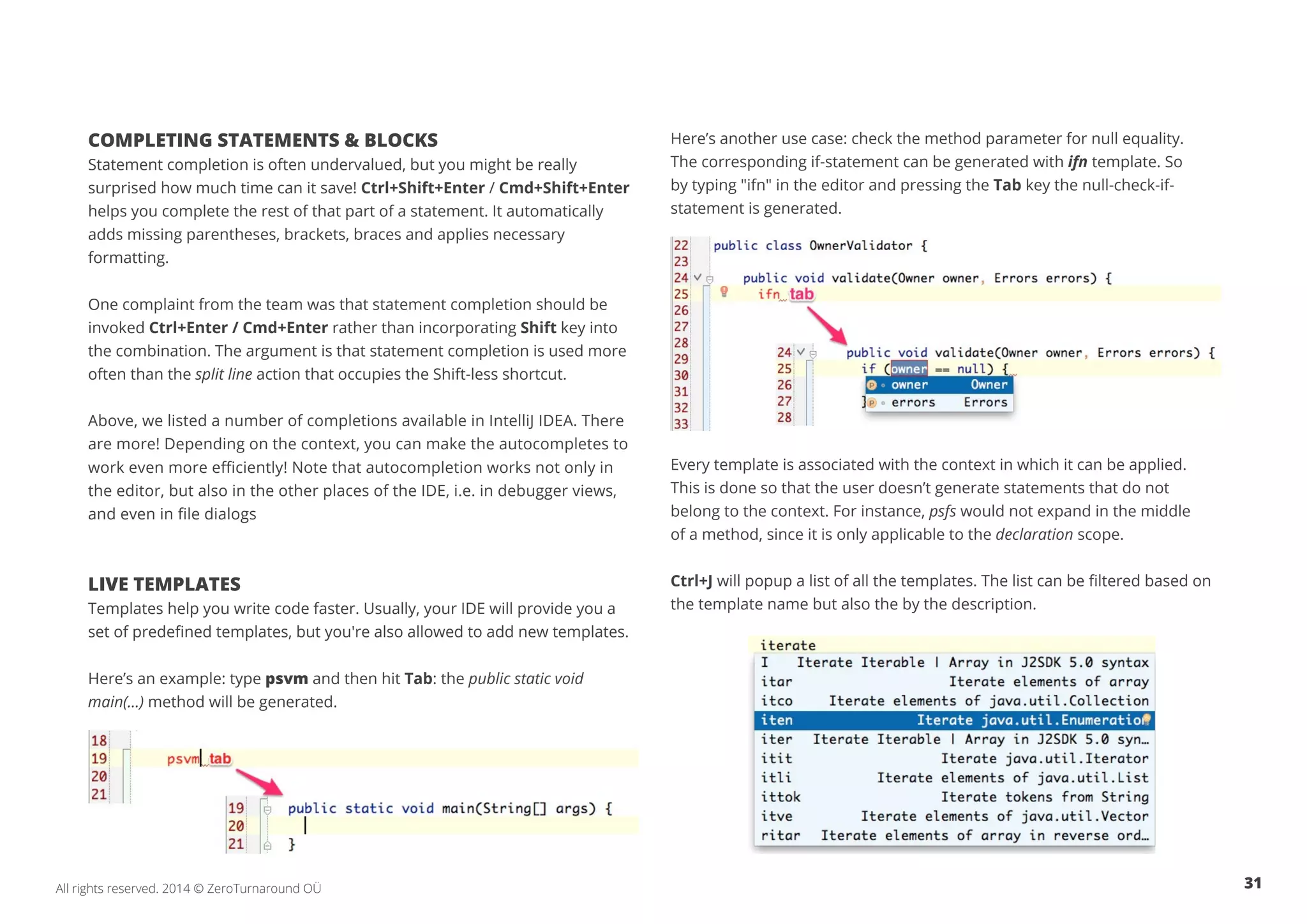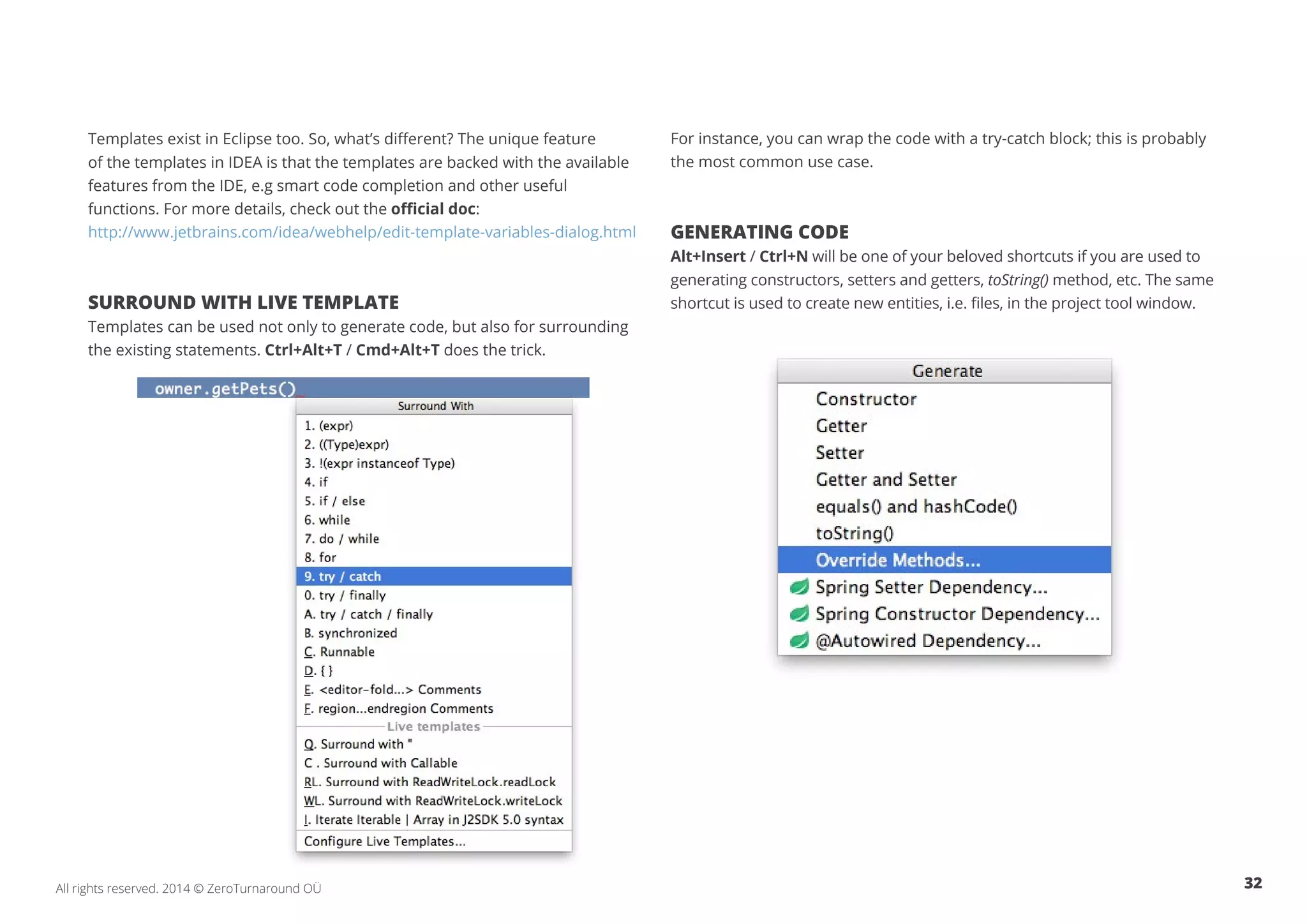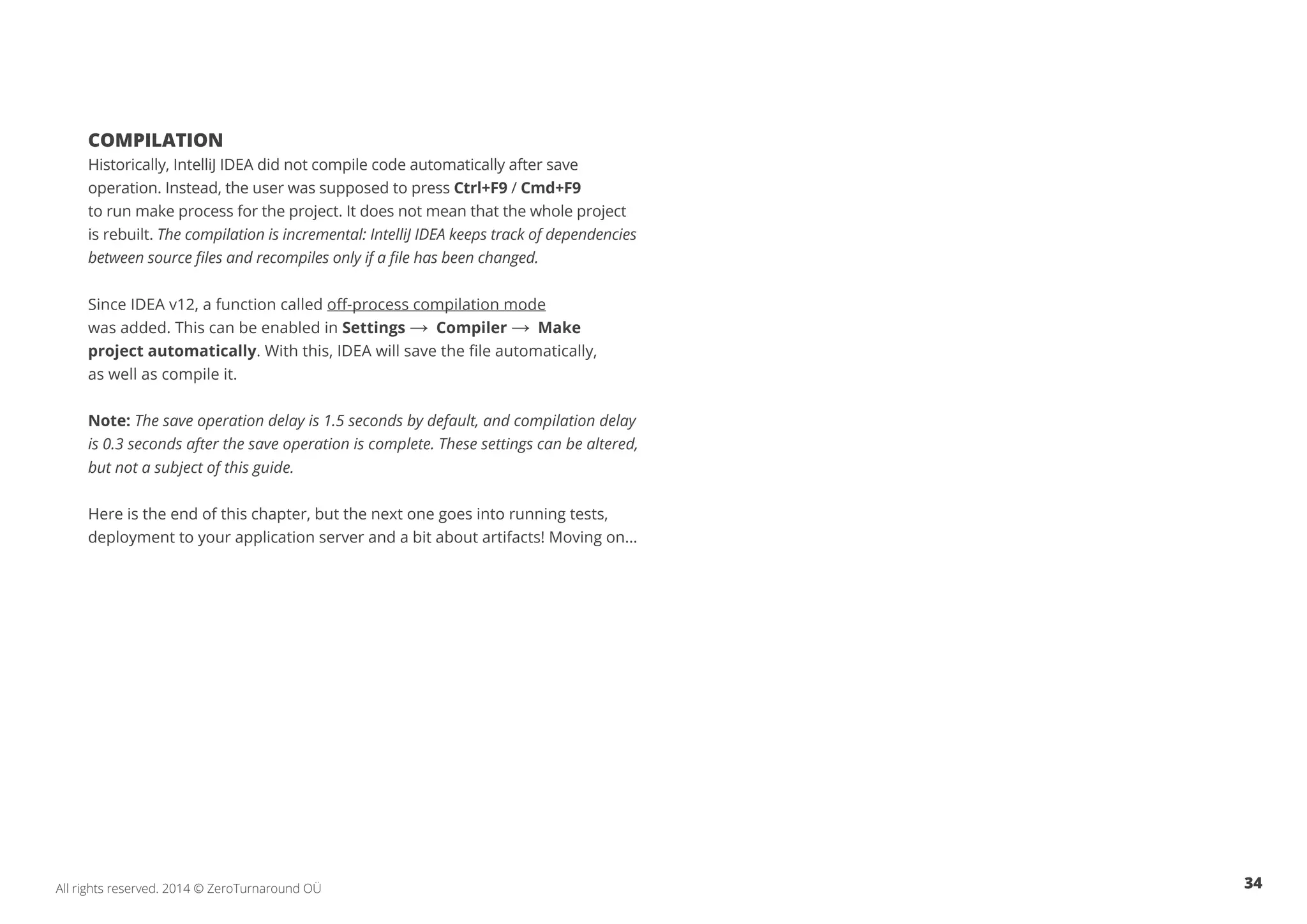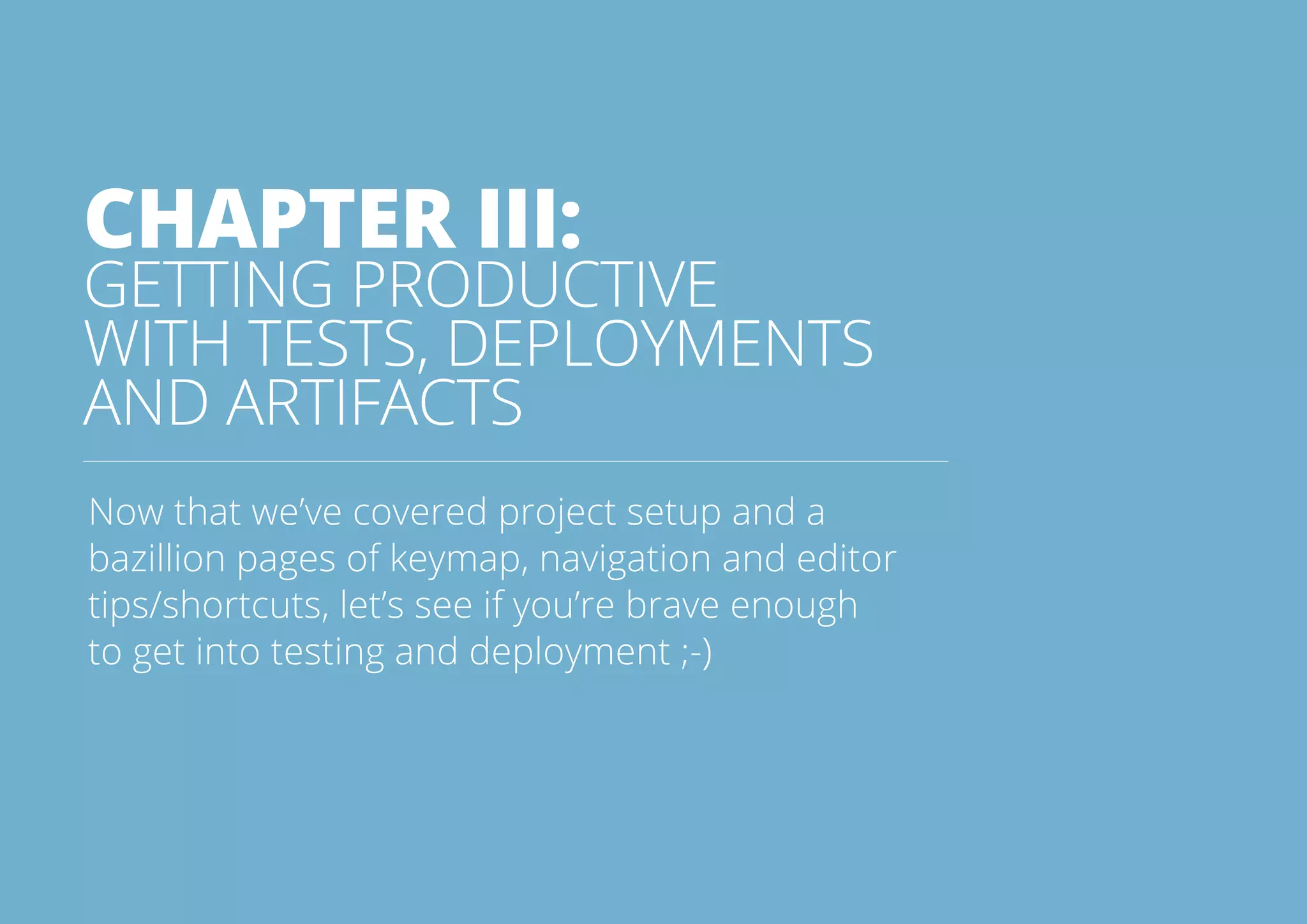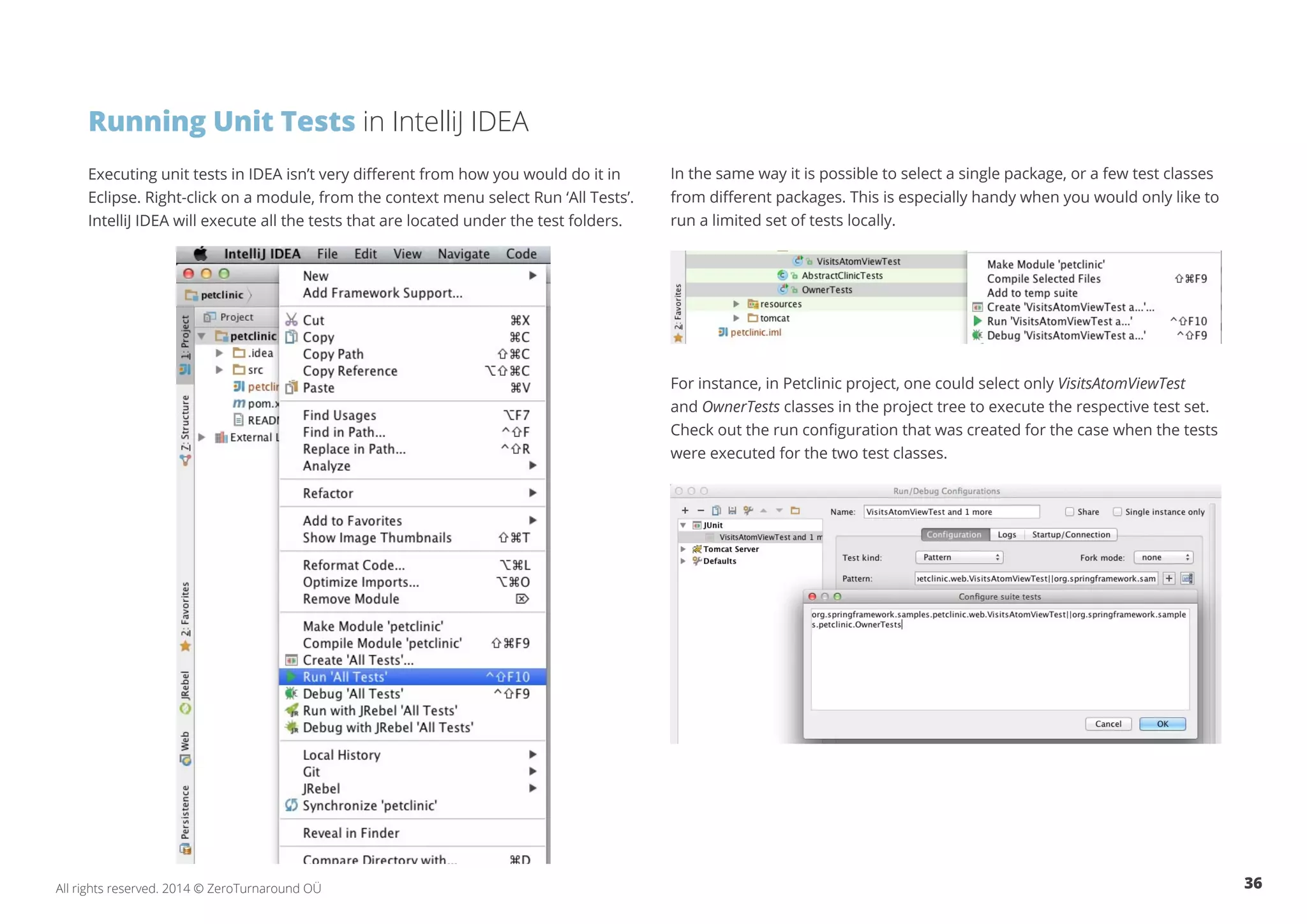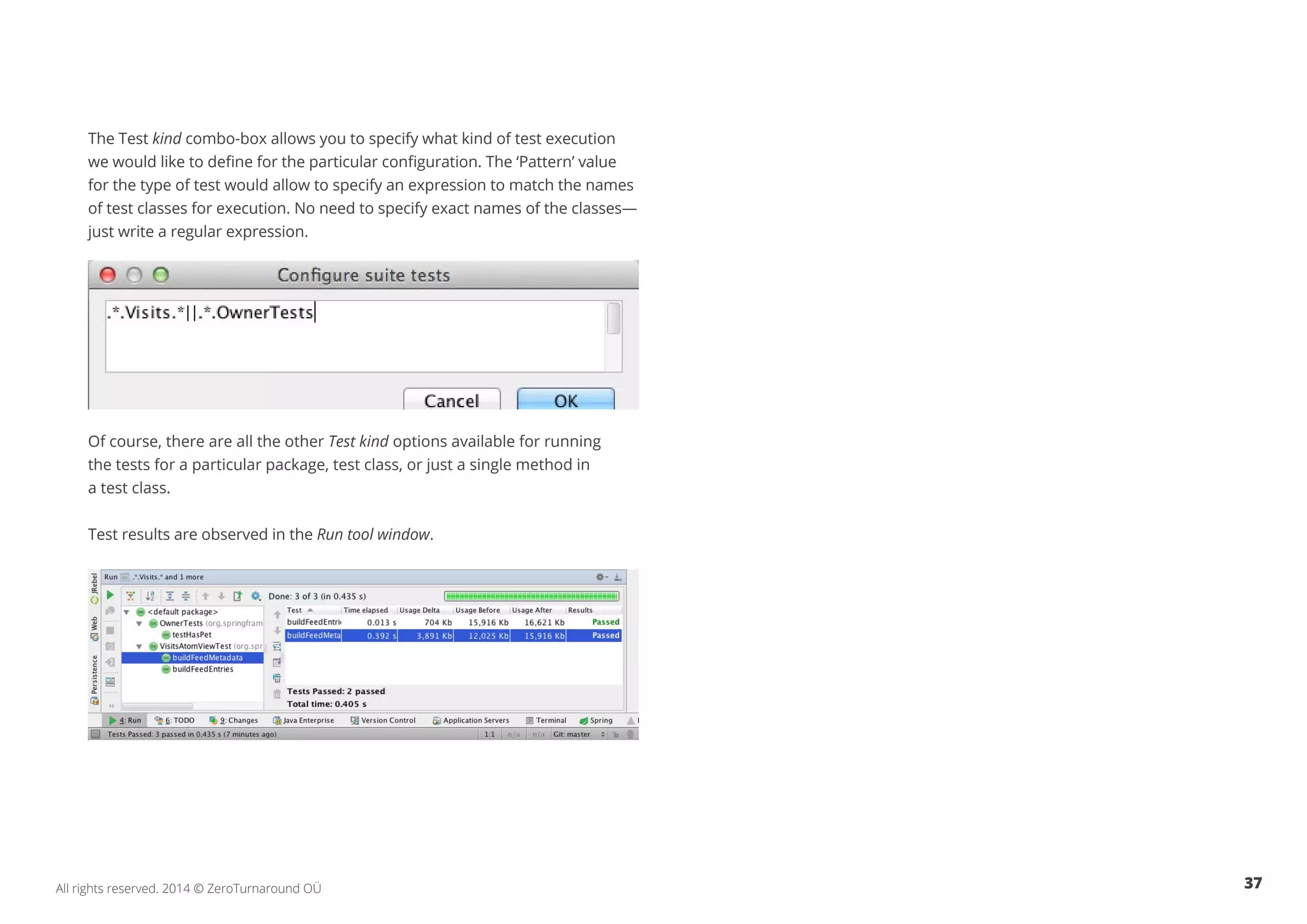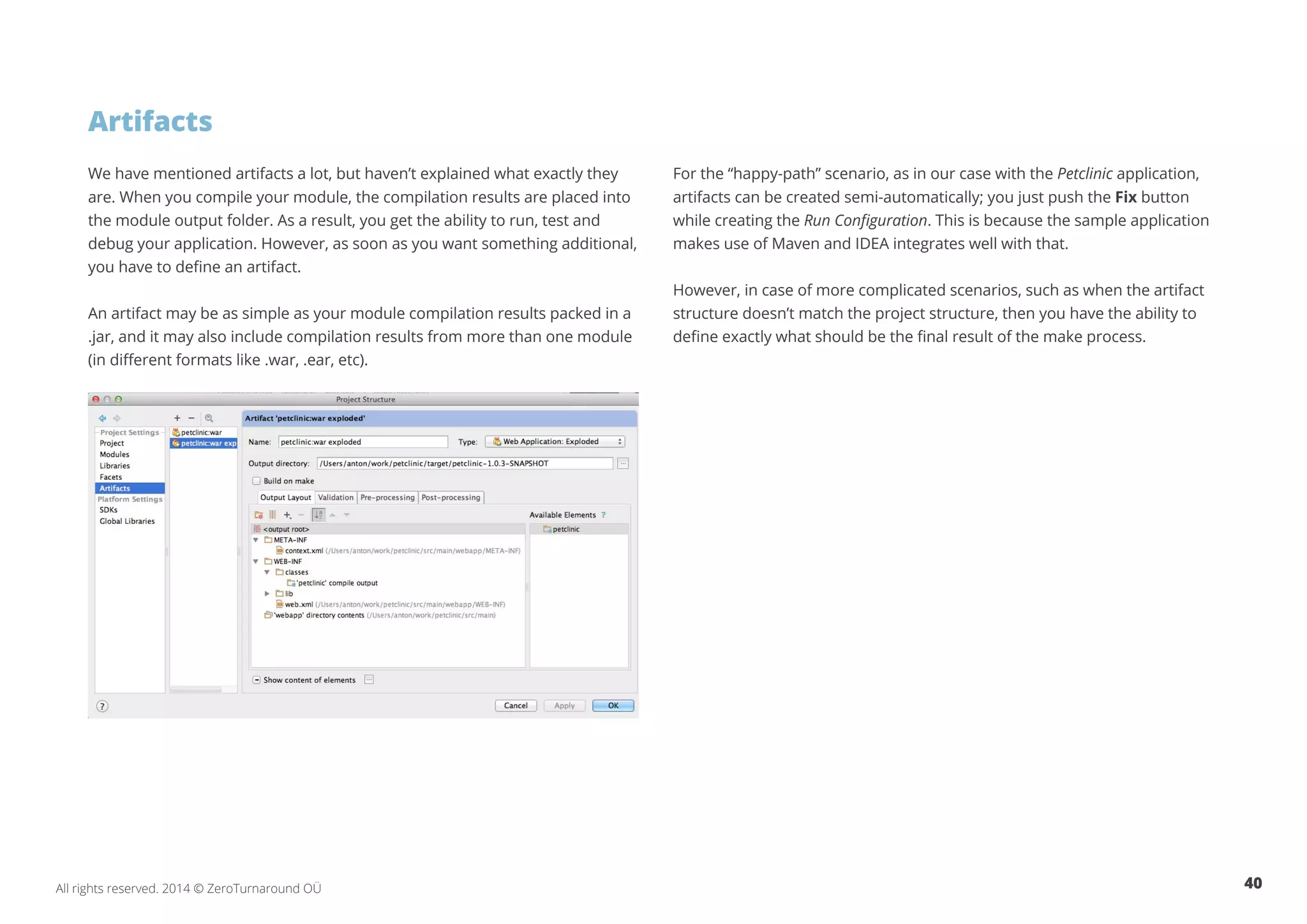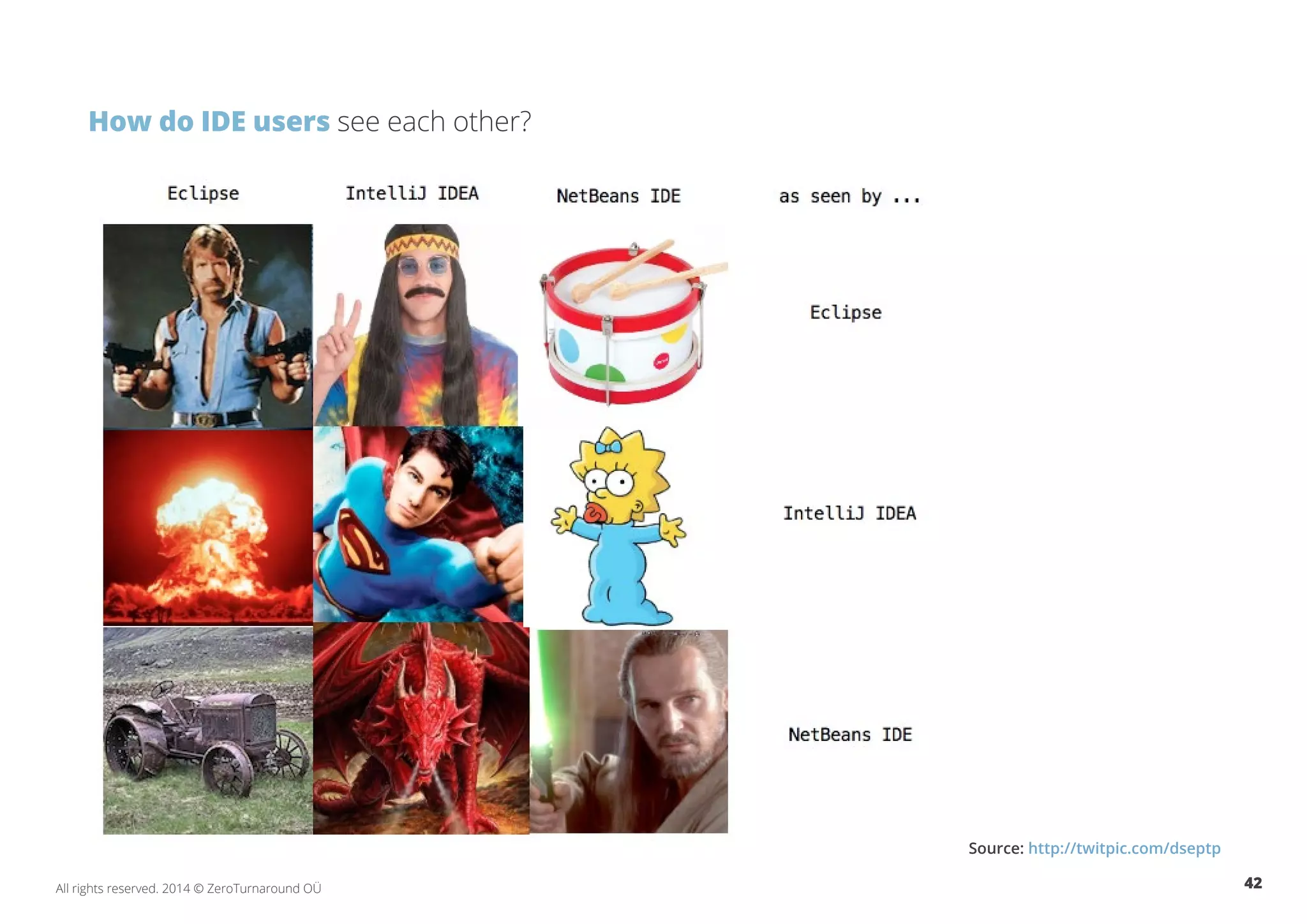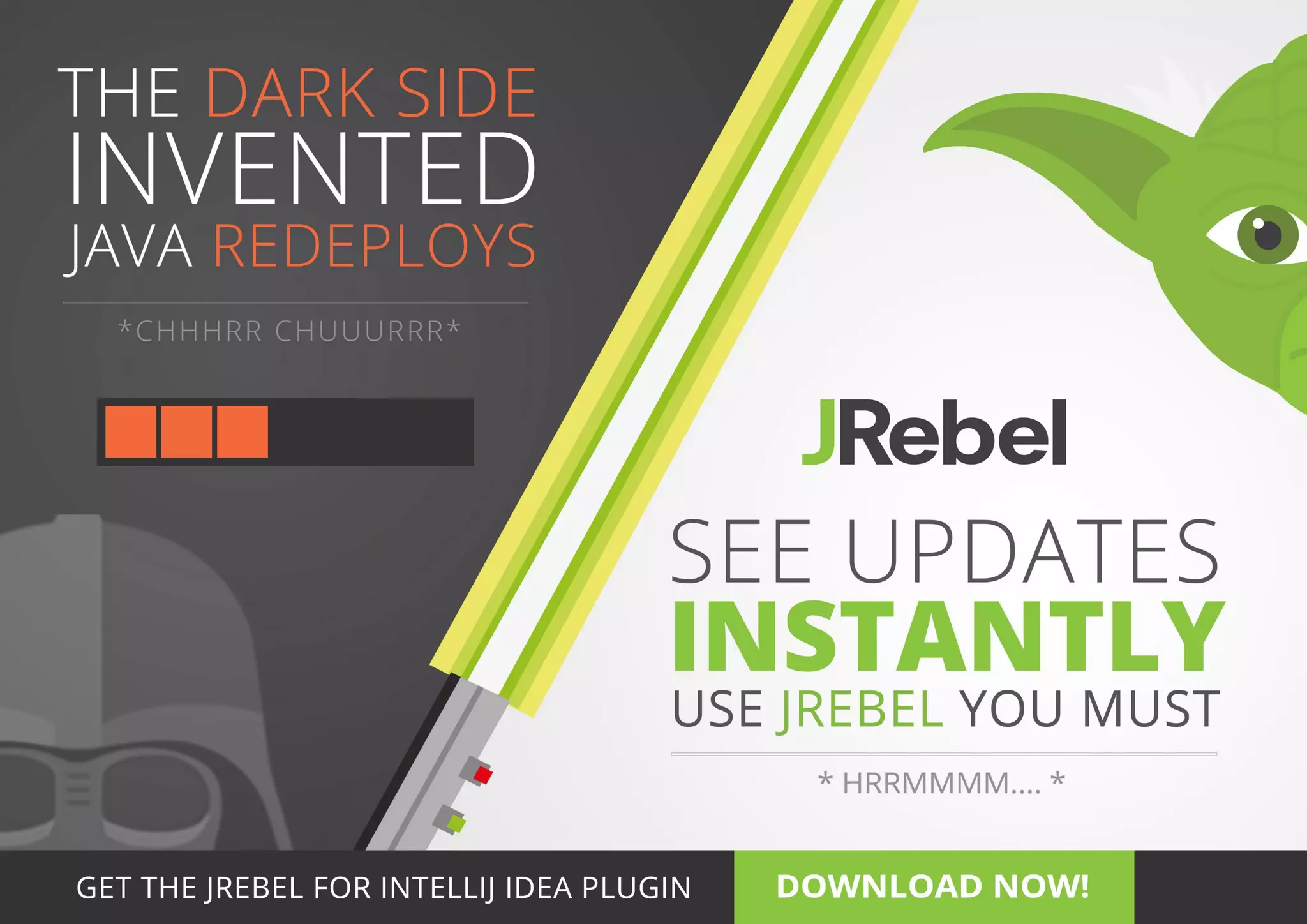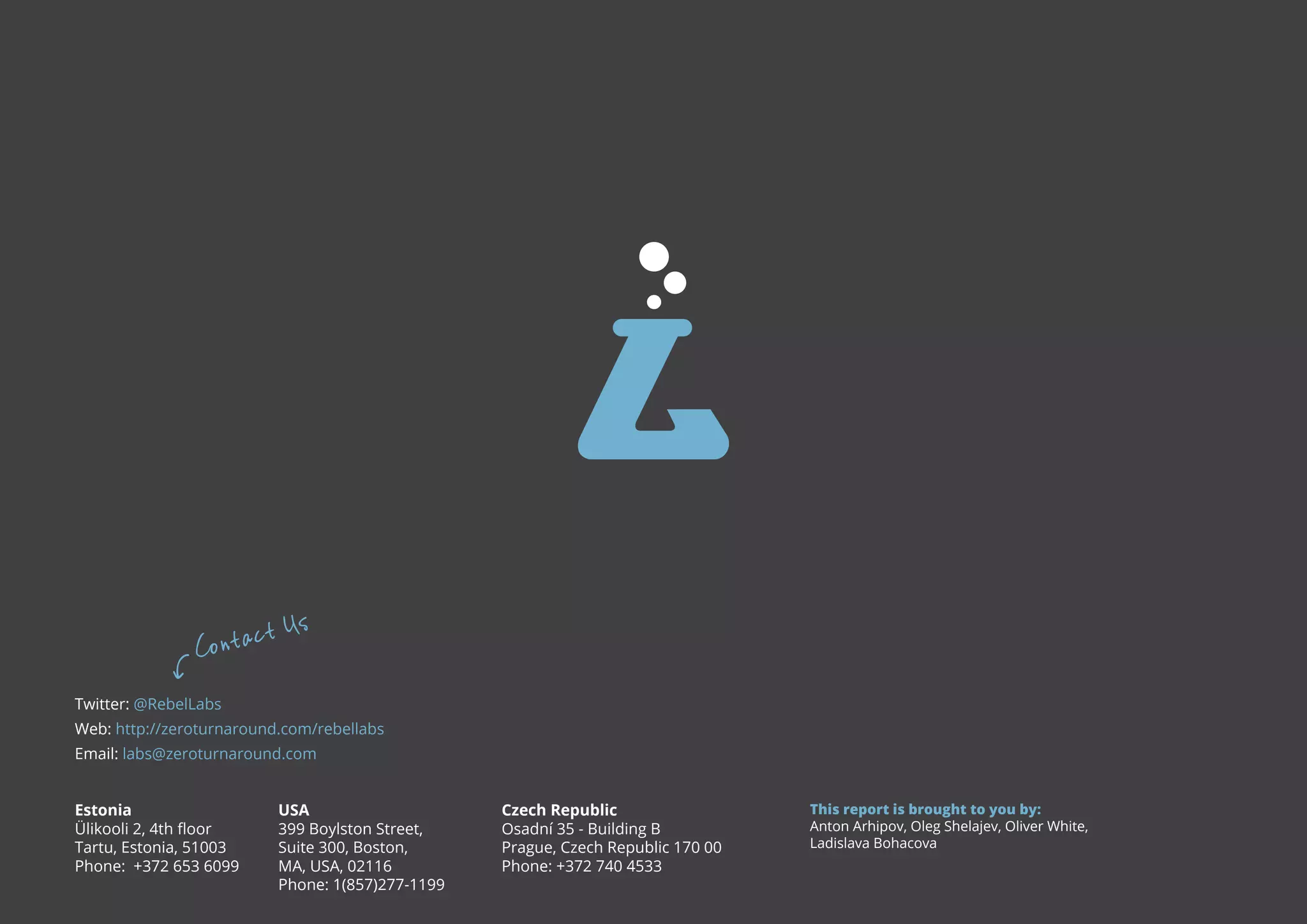This document provides an introduction to getting started with IntelliJ IDEA for developers coming from Eclipse. It discusses importing an existing project from Git, setting up the project structure including modules and folders, and comparing key differences between Eclipse and IntelliJ terminology and workflows. The document is divided into multiple chapters that will cover additional topics such as navigation, settings, testing, and deployment.

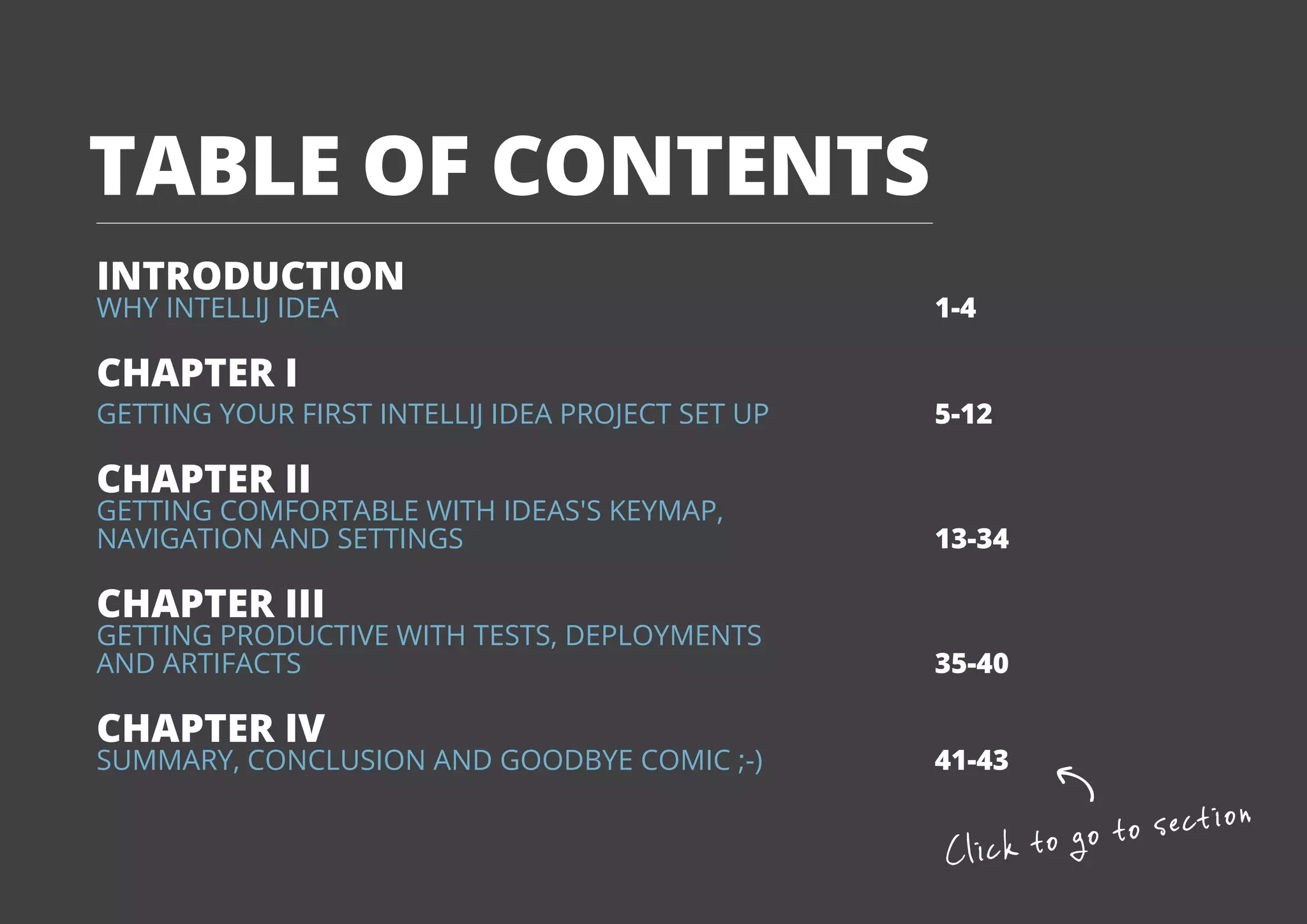
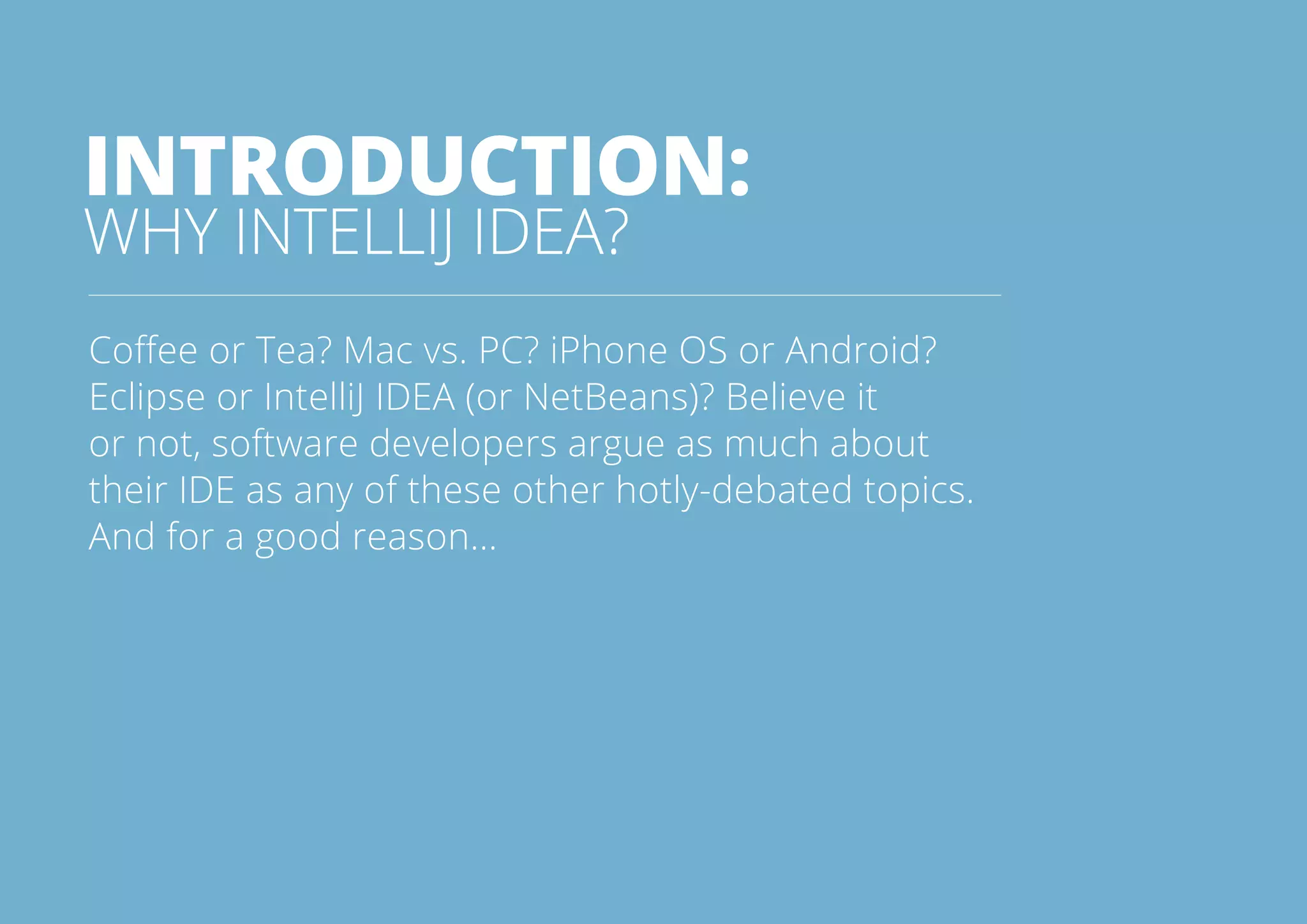

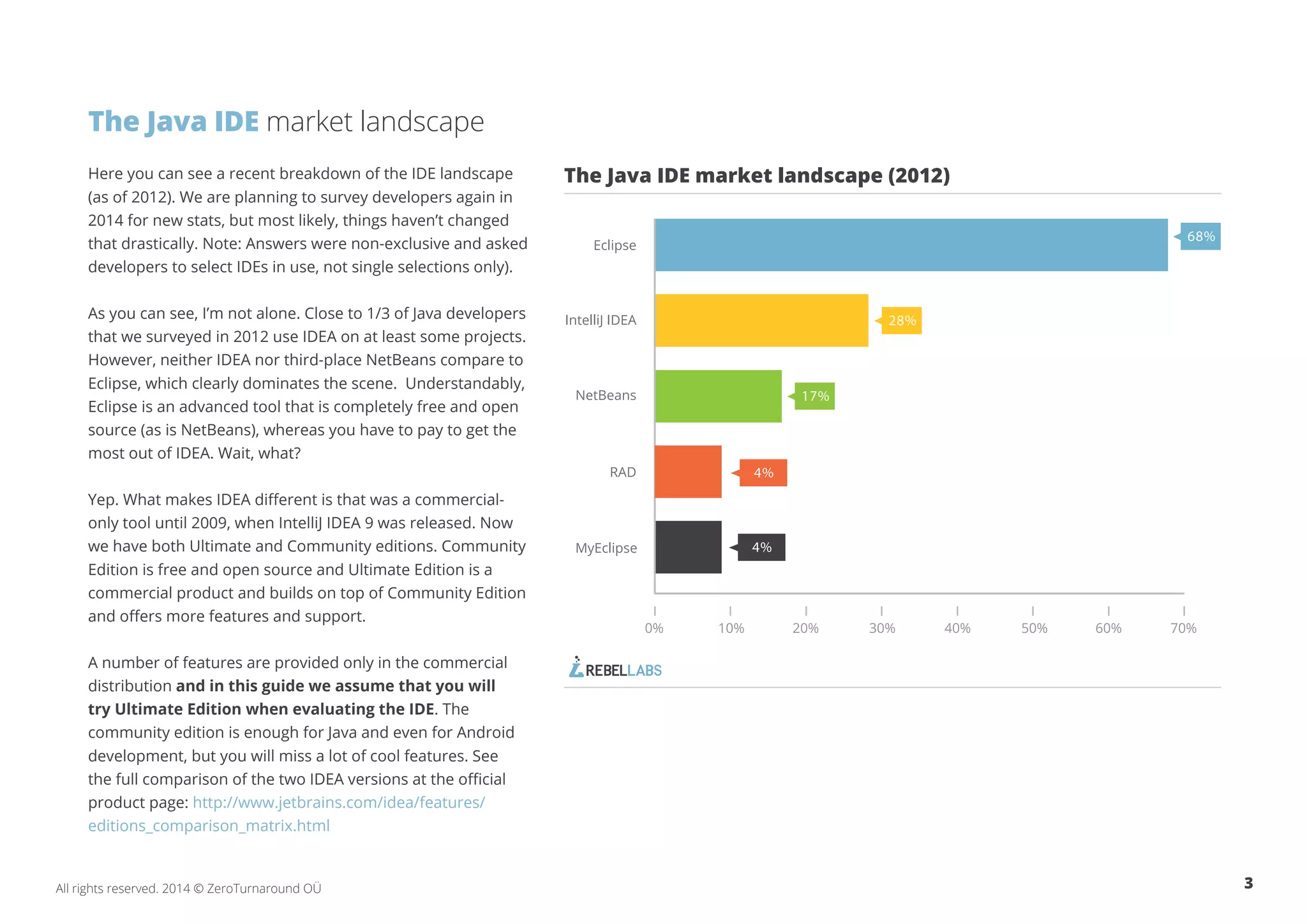


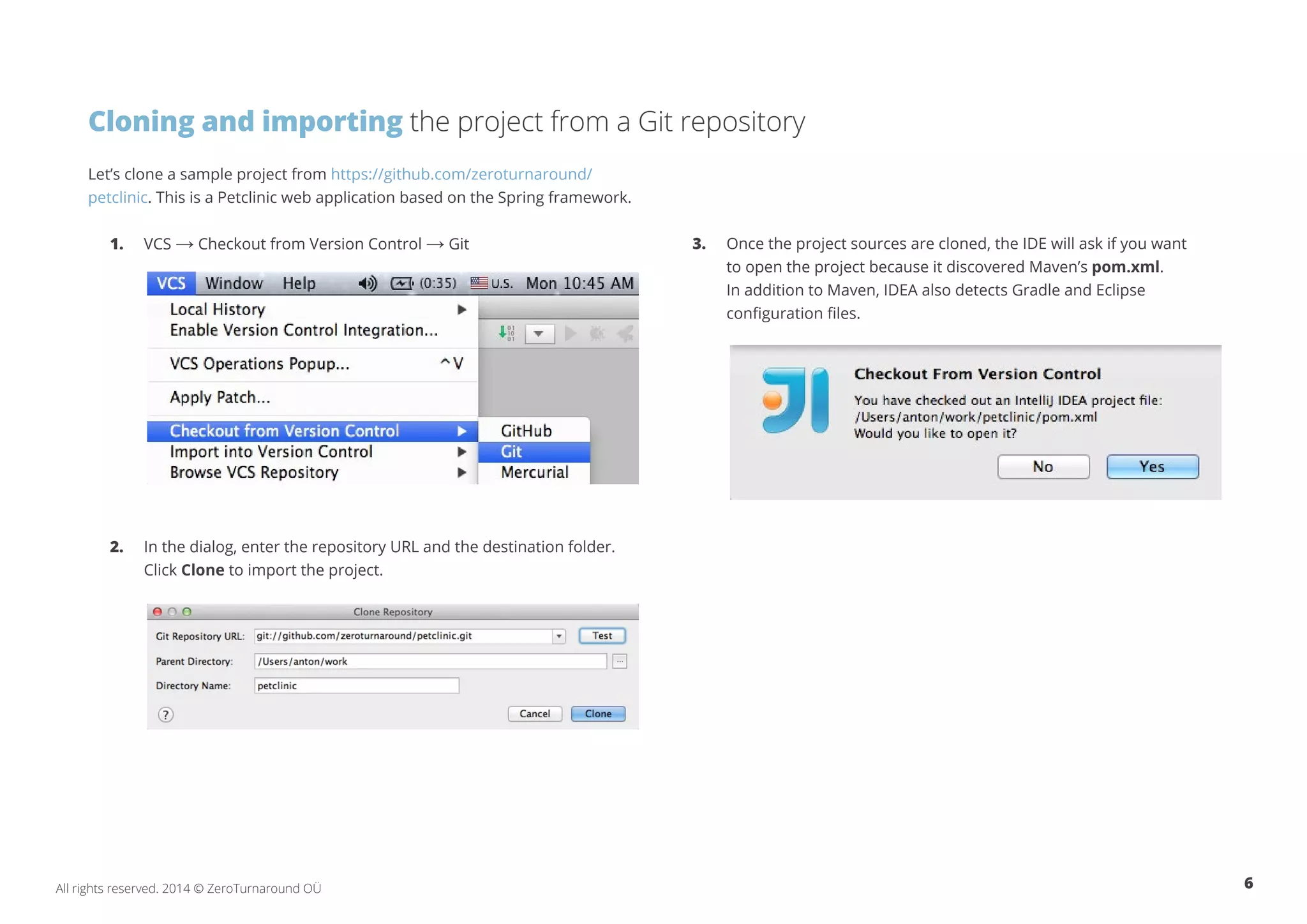

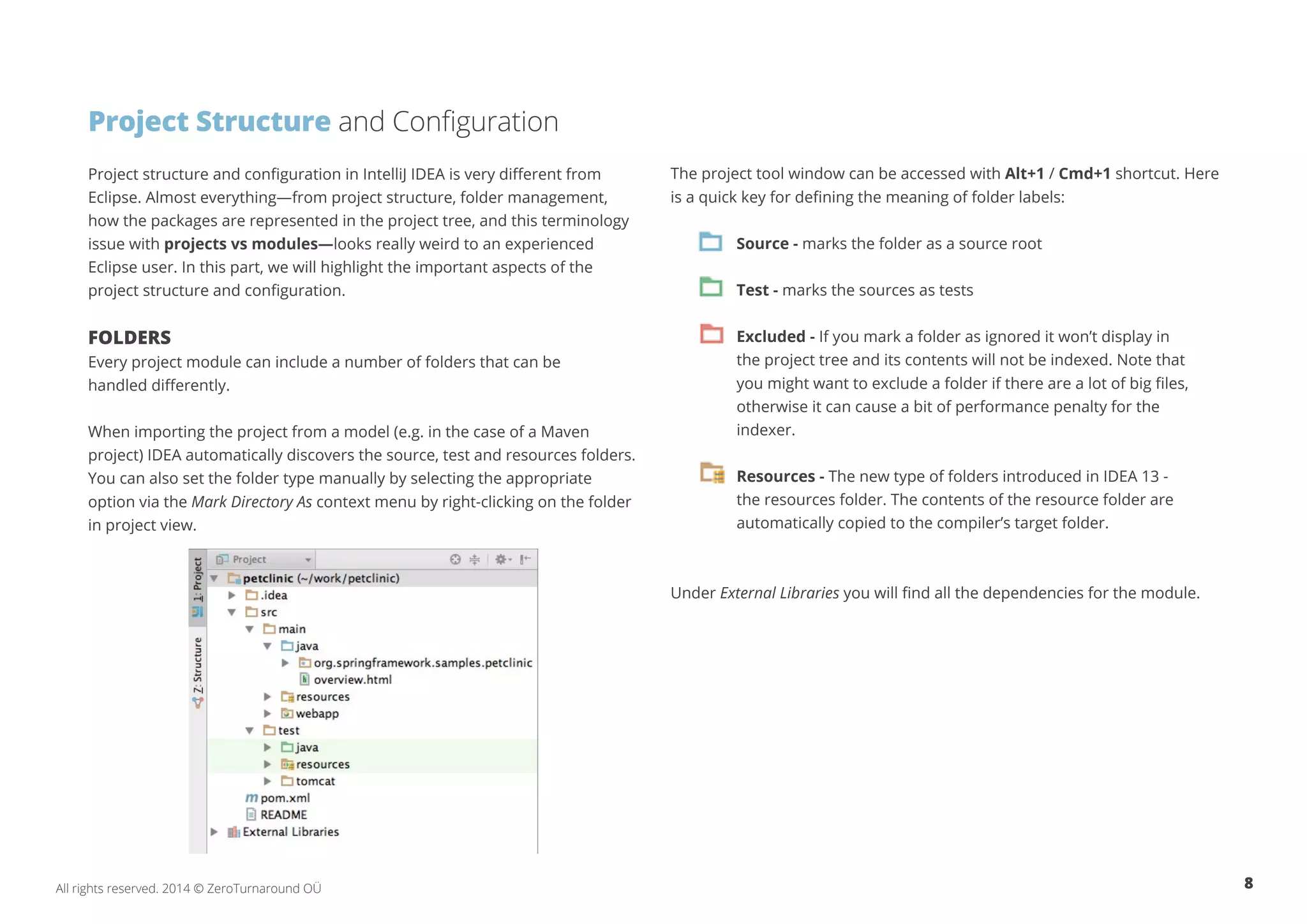
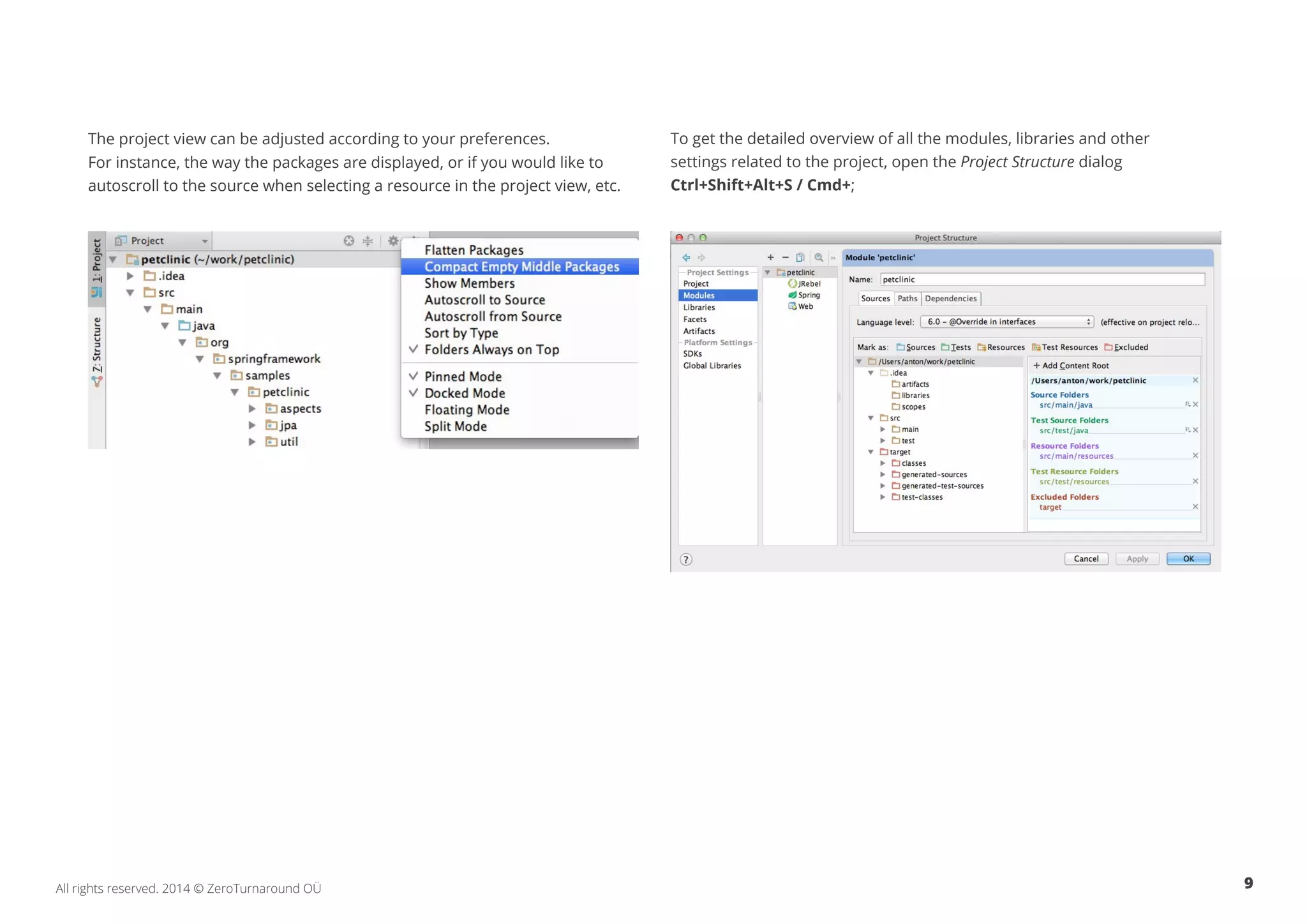
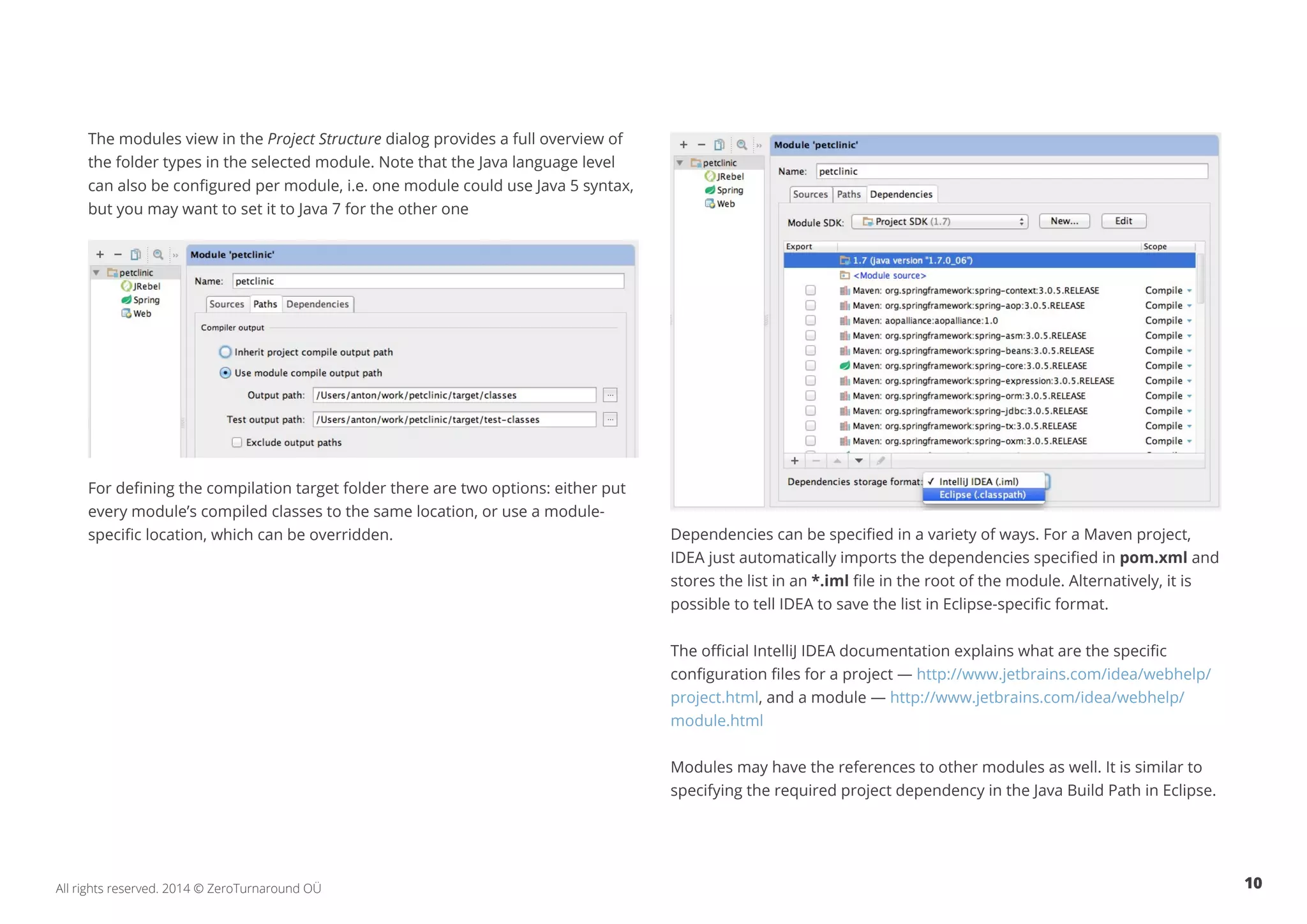
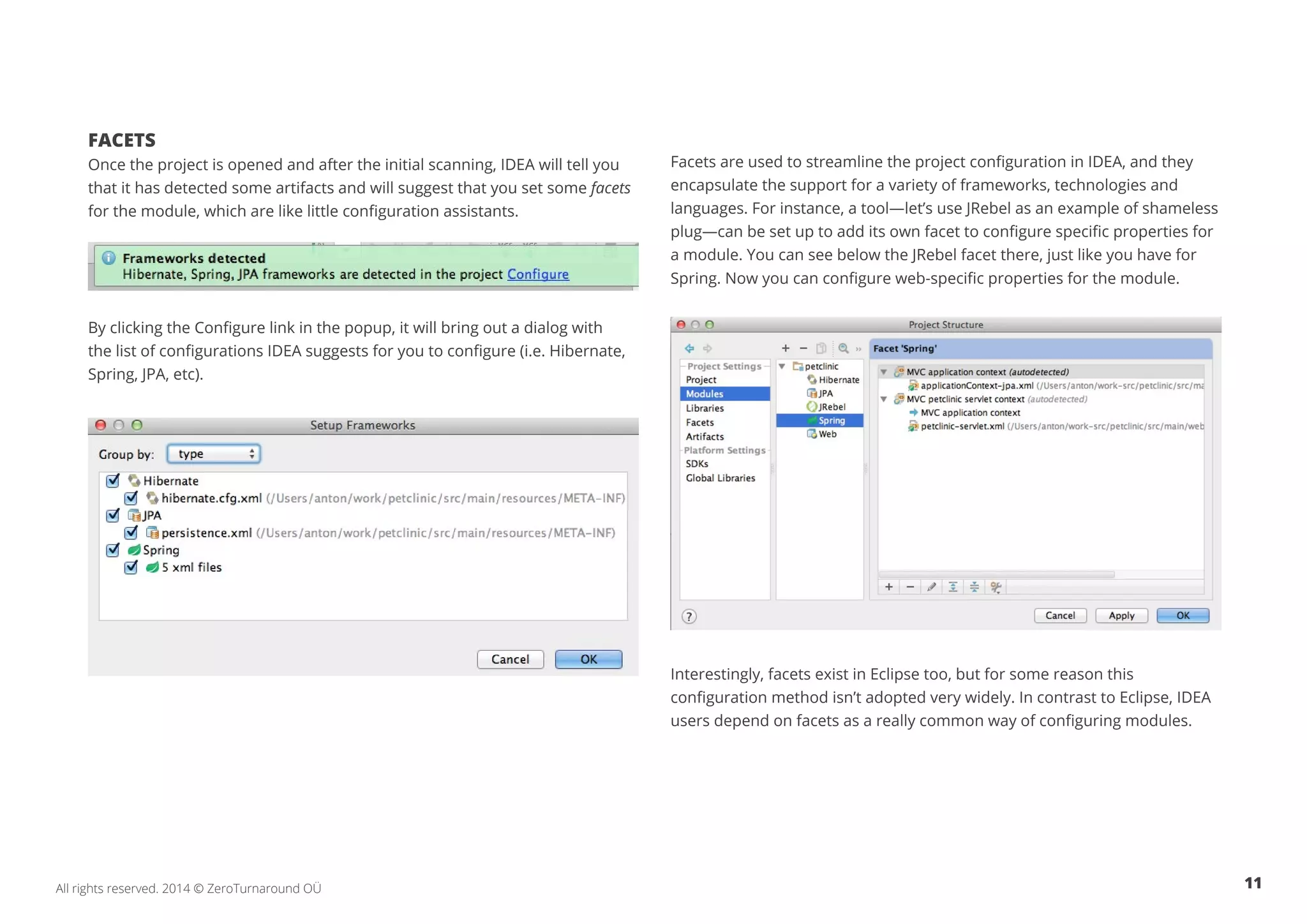
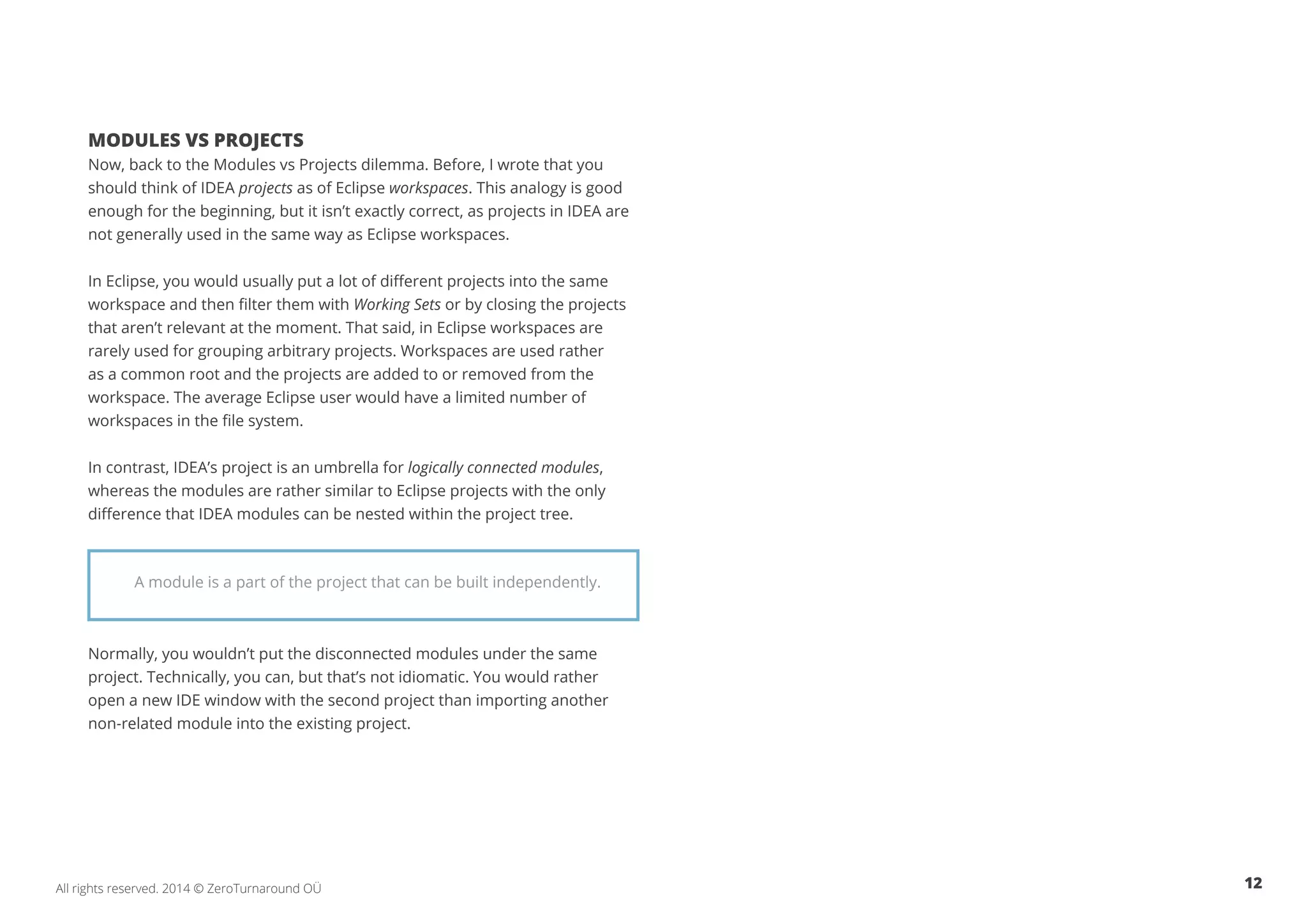
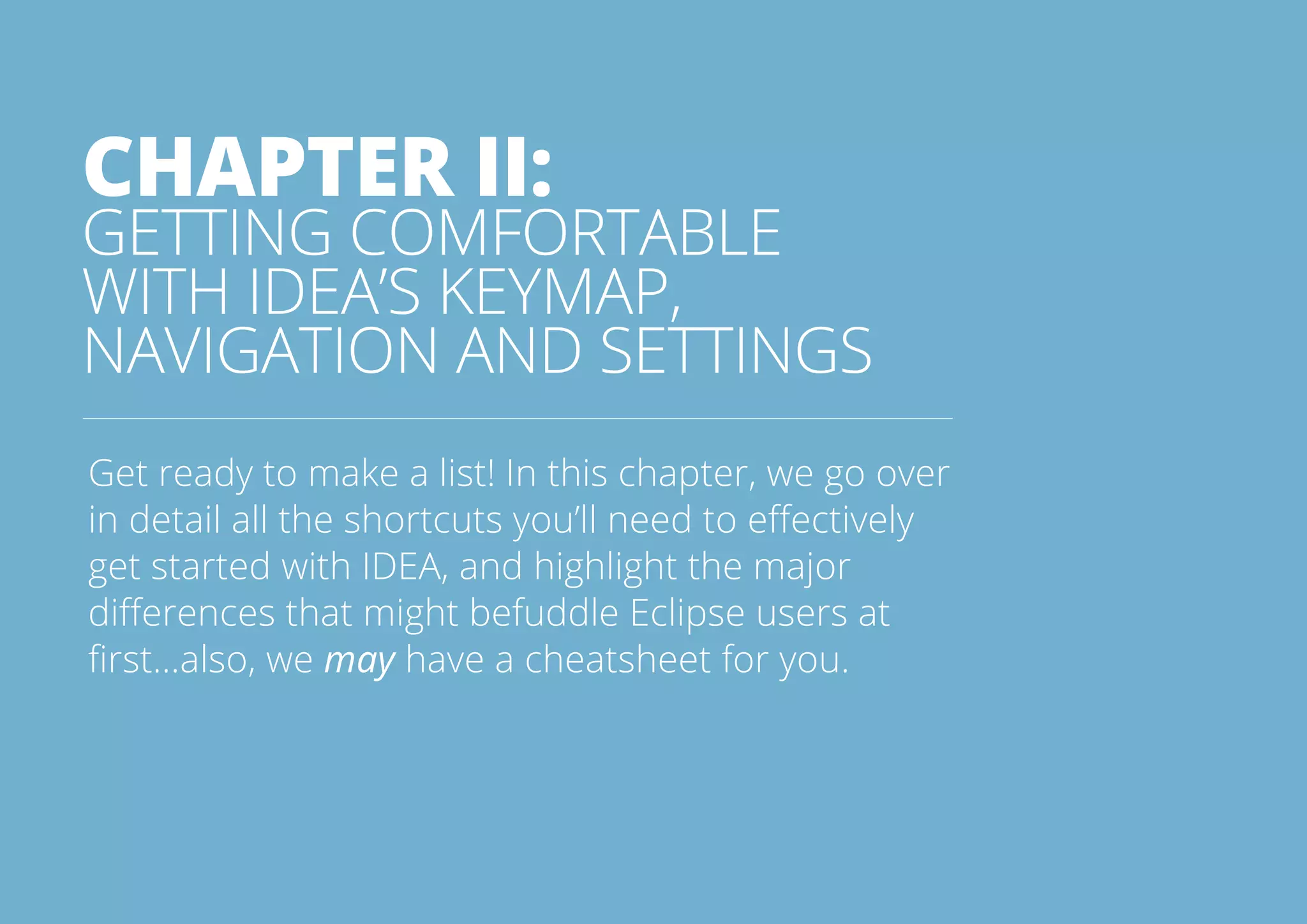
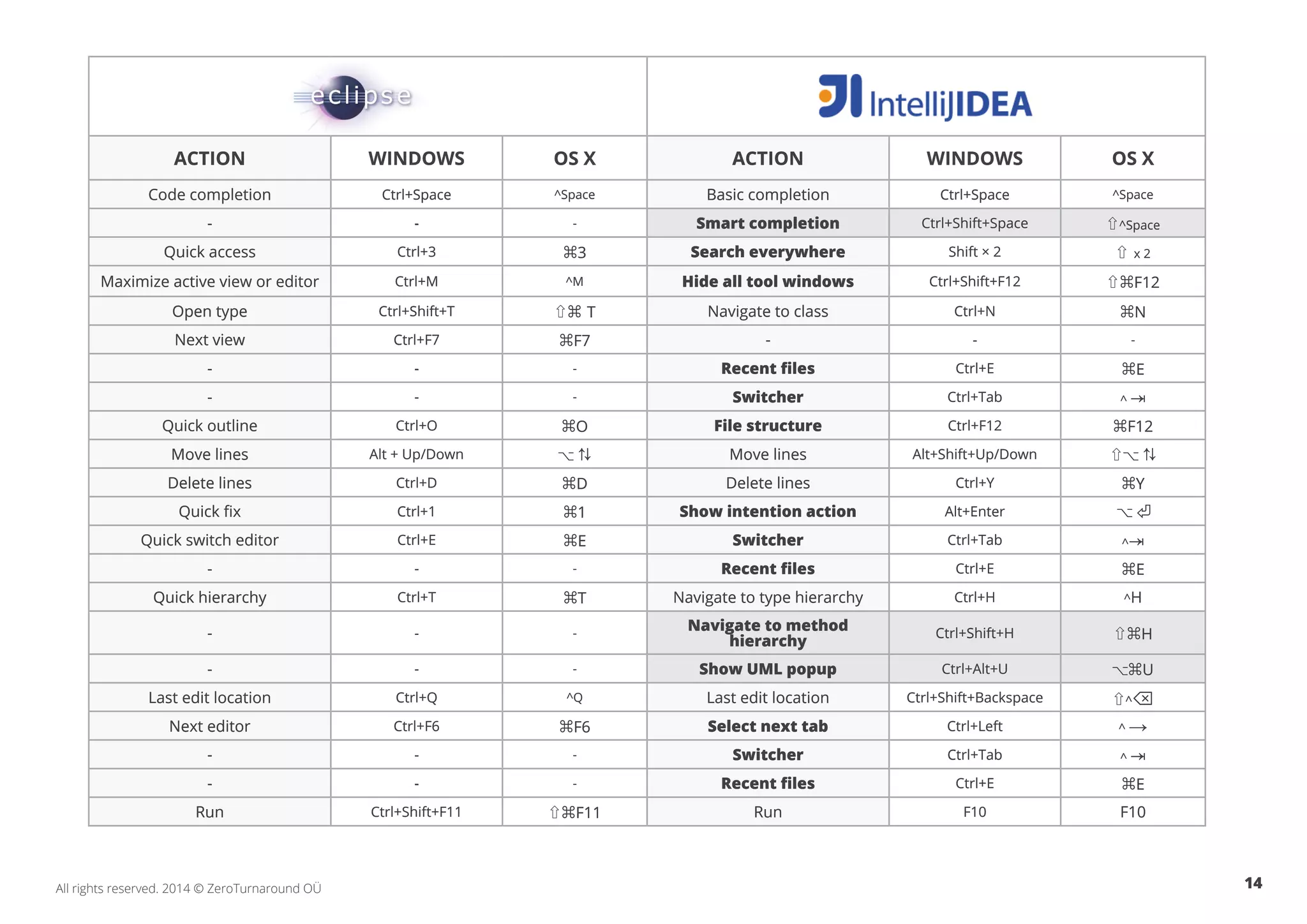
![15All rights reserved. 2014 © ZeroTurnaround OÜ
ACTION WINDOWS OS X ACTION WINDOWS OS X
Correct indentation Ctrl+I ⌘I Auto-indent lines Ctrl+Alt+I ⌥ ⌘ I
Format Ctrl+Shift+F ⇧⌘F Reformat code Ctrl+Alt+L ⌥⌘L
Open resource Ctrl+Shift+R ⇧⌘R Navigate to file Ctrl+Shift+N ⇧⌘N
Surround with Ctrl+Alt+Z ⌥⌘Z Surround with Ctrl+Alt+T ⌥⌘T
- - - Surround with live template Ctrl+Alt+J ⌥⌘J
Open declaration F3 F3 Navigate to declaration Ctrl+B ⌘B
- - - Quick definition Ctrl+Shift+I ⇧⌘ I
Open type hierarchy F4 F4 Navigate to type hierarchy Ctrl+H -
- - - Show UML popup Ctrl+Alt+U ⌥⌘U
References in workspace Ctrl+Shift+G ⇧⌘G Find usages Alt+F7 ⌥F7
- - - Show usages Ctrl+Alt+F7 ⌥⌘F7
- - - Find usages settings Ctrl+Alt+Shift+F7 ⇧ ⌥⌘F7
Open search dialog Ctrl+H ^H Find in path Ctrl+Shift+F ⇧^F
Copy lines Ctrl+Alt+Down ⌥⌘↓ Duplicate lines Ctrl+D ⌘D
Extract local variable Ctrl+Alt+L ⌥⌘L Extract variable Ctrl+Alt+V ⌥⌘V
Assign to field Ctrl+2,F ⌘2,7 Extract field Ctrl+Alt+F ⌥⌘F
Show refactor quick menu Ctrl+Alt+T ⌥⌘T Refactor this Ctrl+Shift+Alt+T ⇧ ⌥⌘T
Rename Ctrl+Alt+R ⌥⌘R Rename Shift+F6 ⇧F6
Go to line Ctrl+L ⌘L Navigate to line Ctrl+G ⌘G
Structured selection Alt+Shift+Up/Down ⇧⌥⇅ Select word at caret Ctrl+W/Ctrl+Shift+W ⌘W/ ⇧⌘W
Find next Ctrl+J ⌘K Find next F3 F3
Show in Ctrl+Alt+W ⌥⌘W Select in Alt+F1 ⌥F1
Back Ctrl+[ ⌘[ Back Ctrl+Alt+Left ⌥⌘←
Forward Ctrl+] ⌘] Forward Ctrl+Alt+Right ⌥⌘ →](https://image.slidesharecdn.com/intellij-idea-report-160123172151/75/Intelli-j-idea-report-17-2048.jpg)


